RARE! WWII 1943 U.S. 5th Air Force New Ireland Operation Cartwheel New Guinea Campaign Combat Flight Navigation Map (Combat Marked)
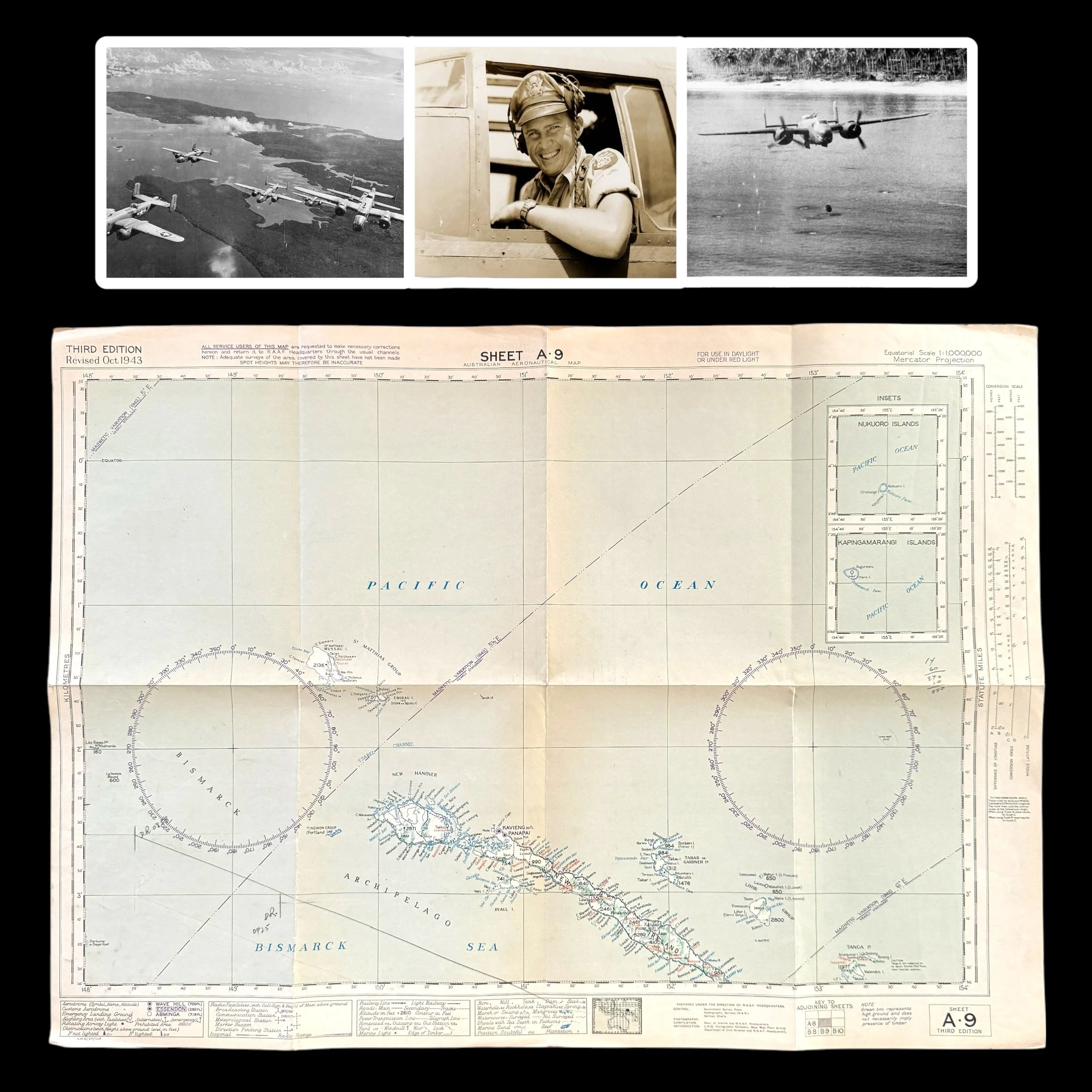
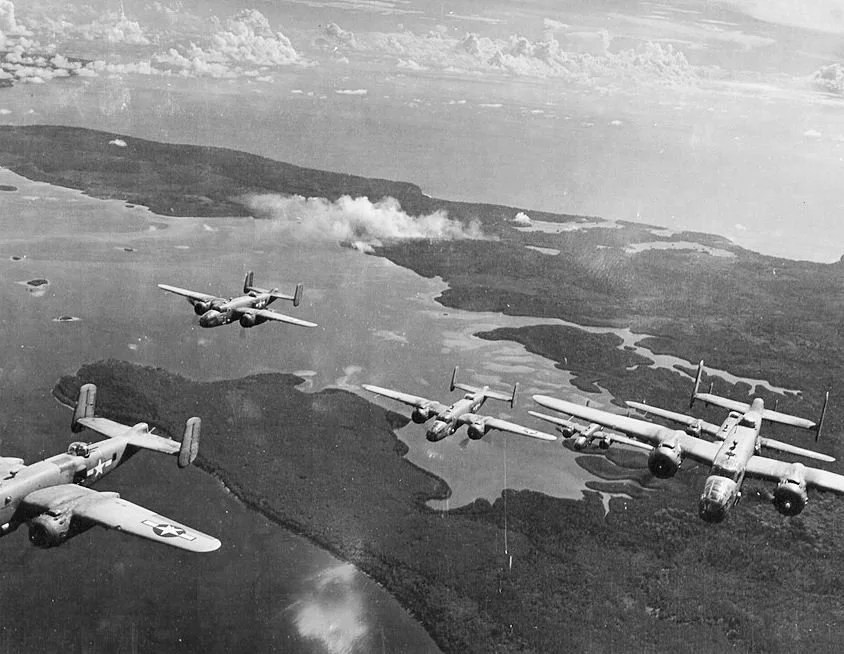
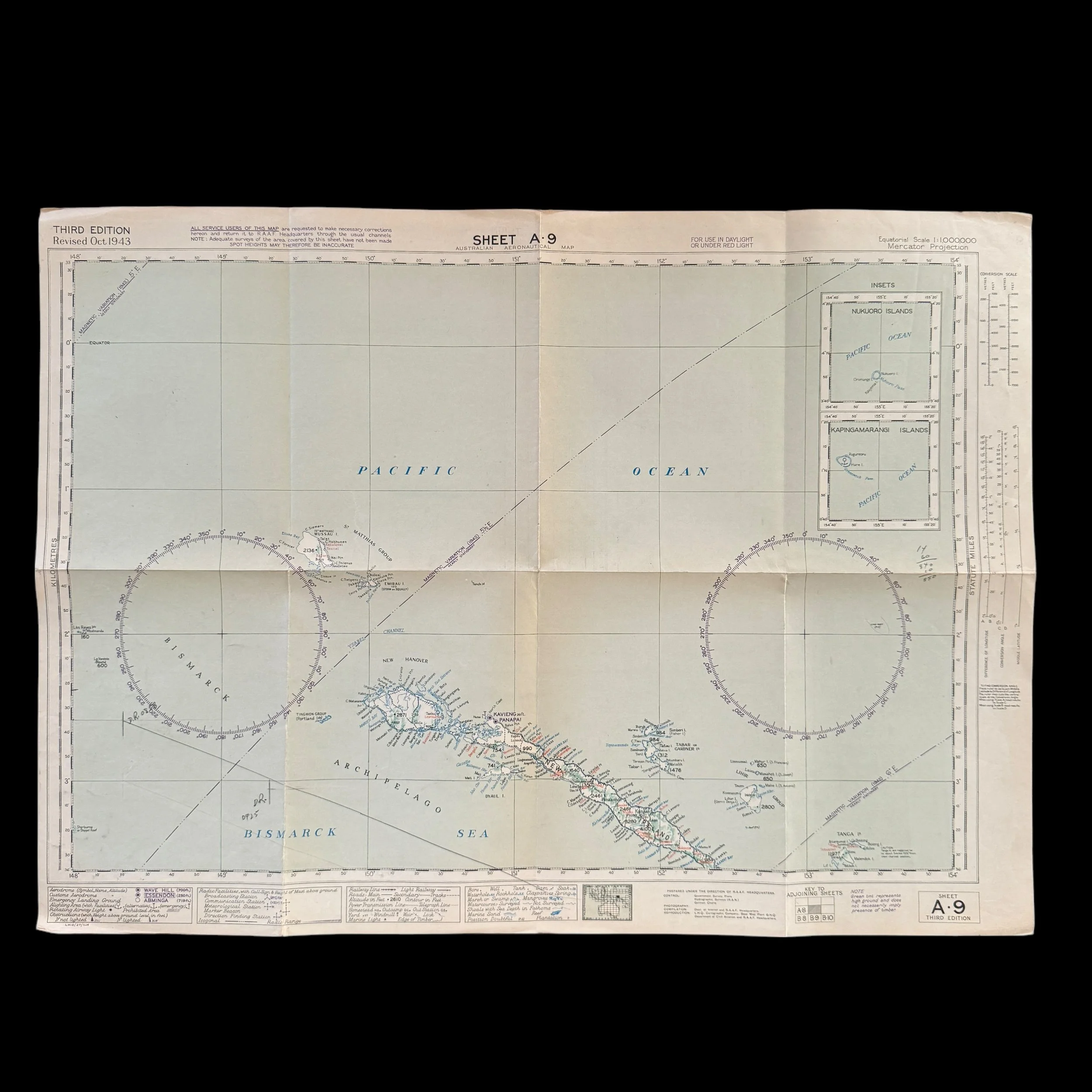
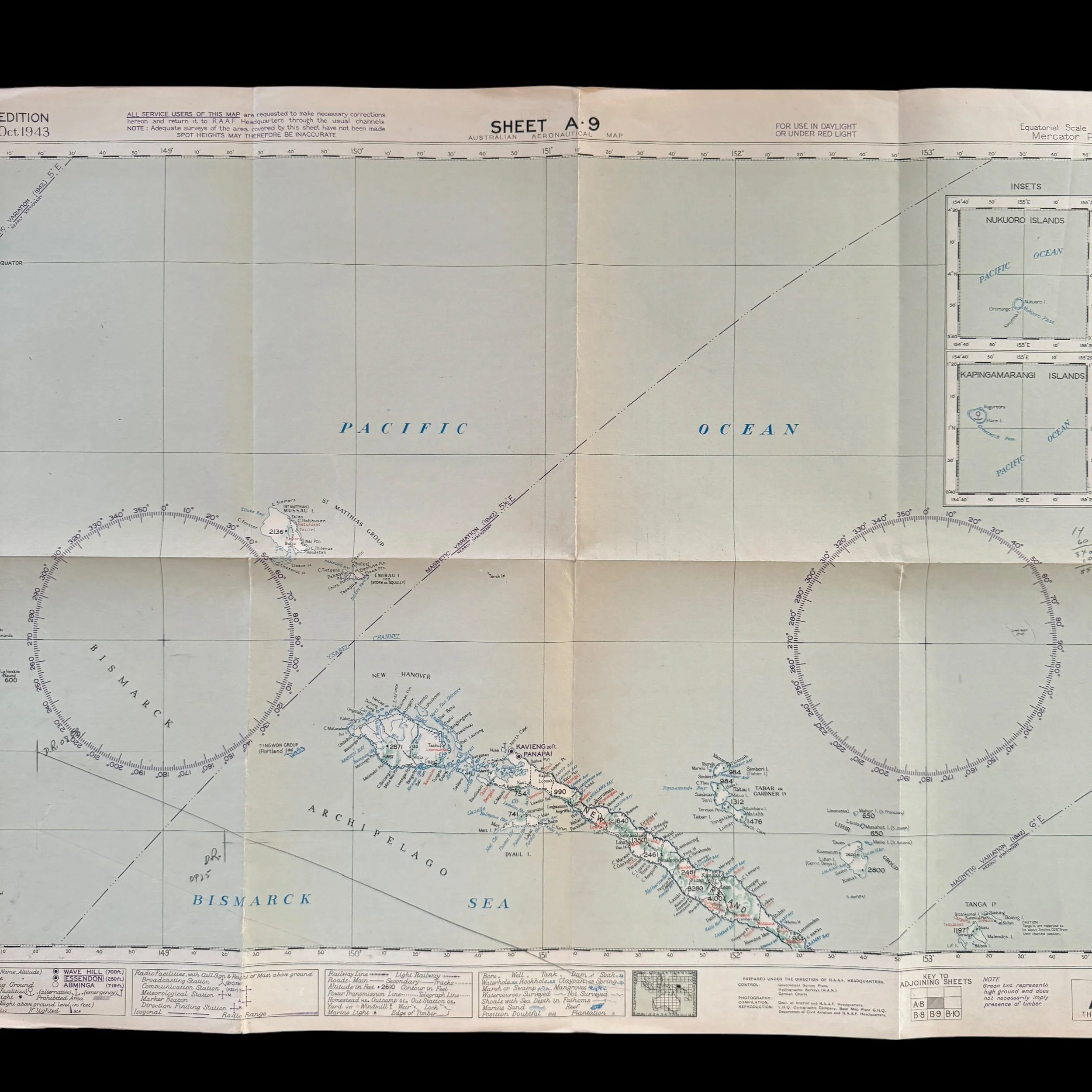
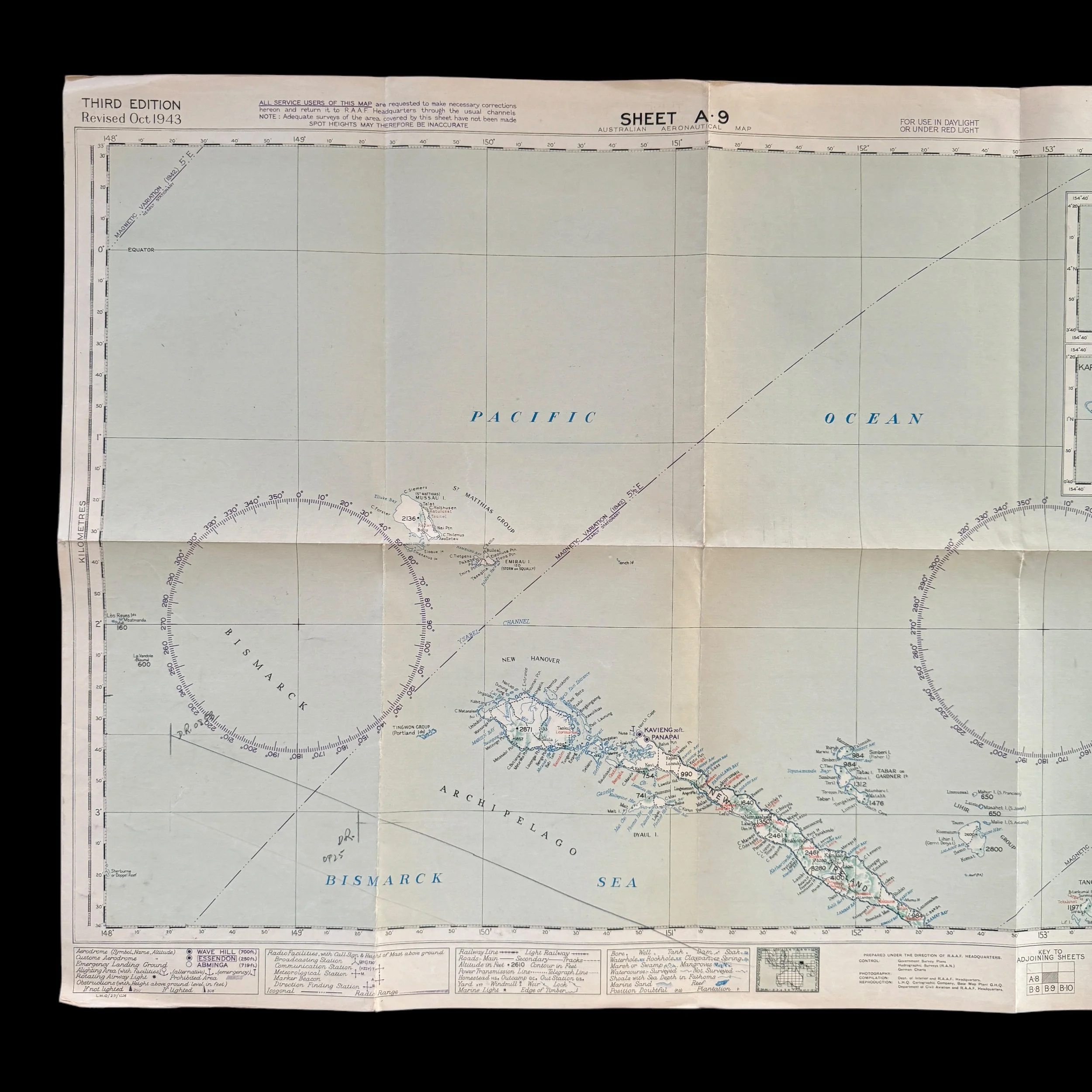
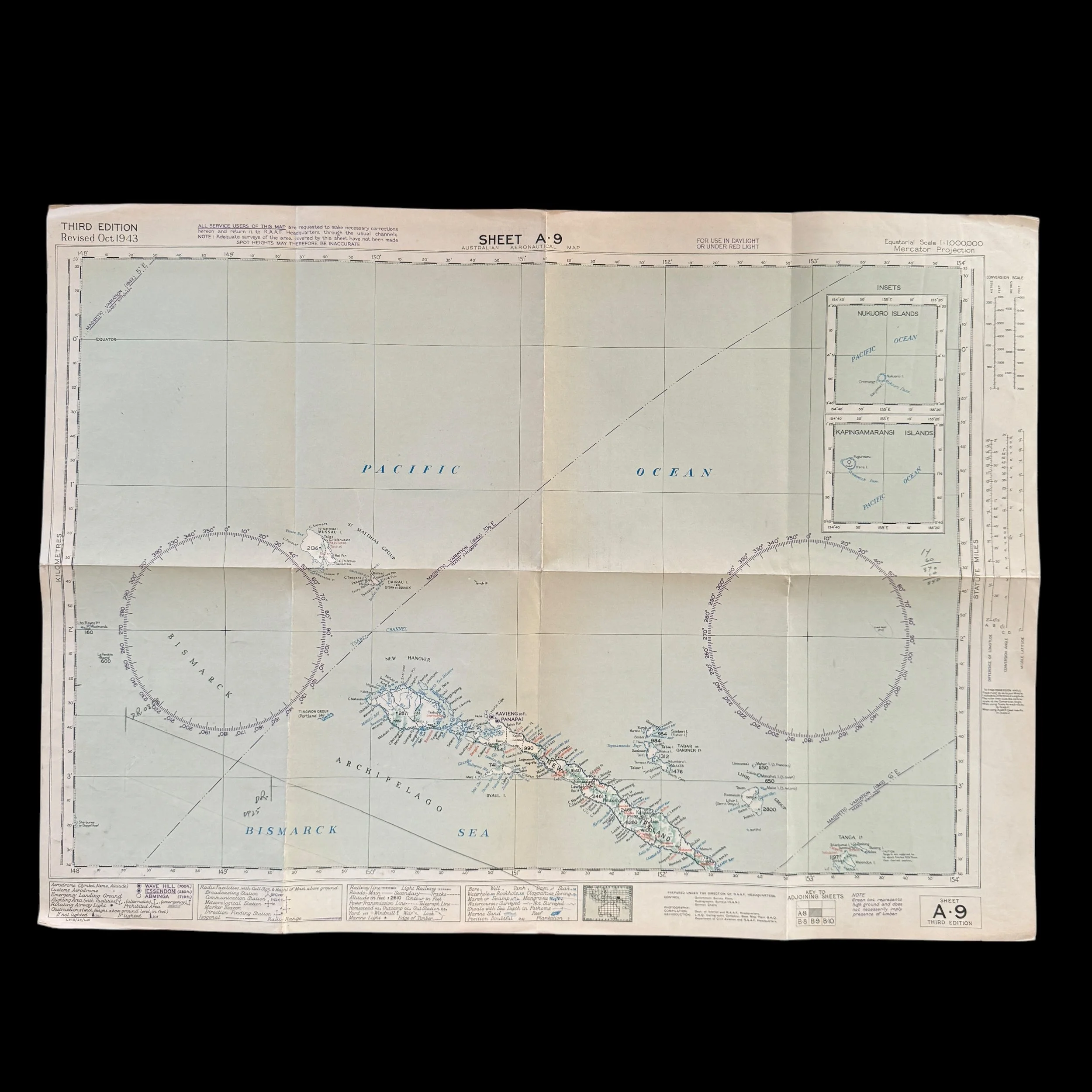
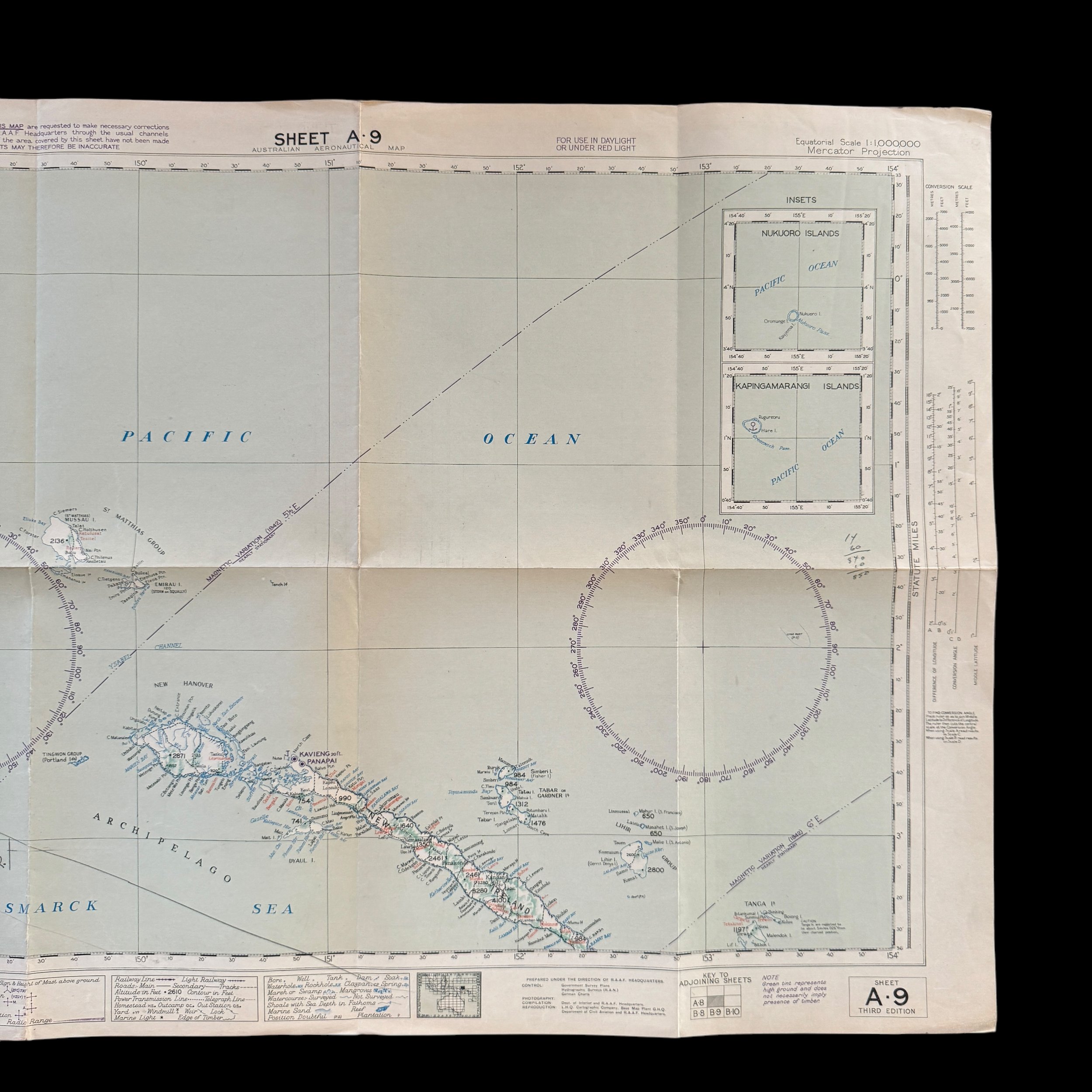
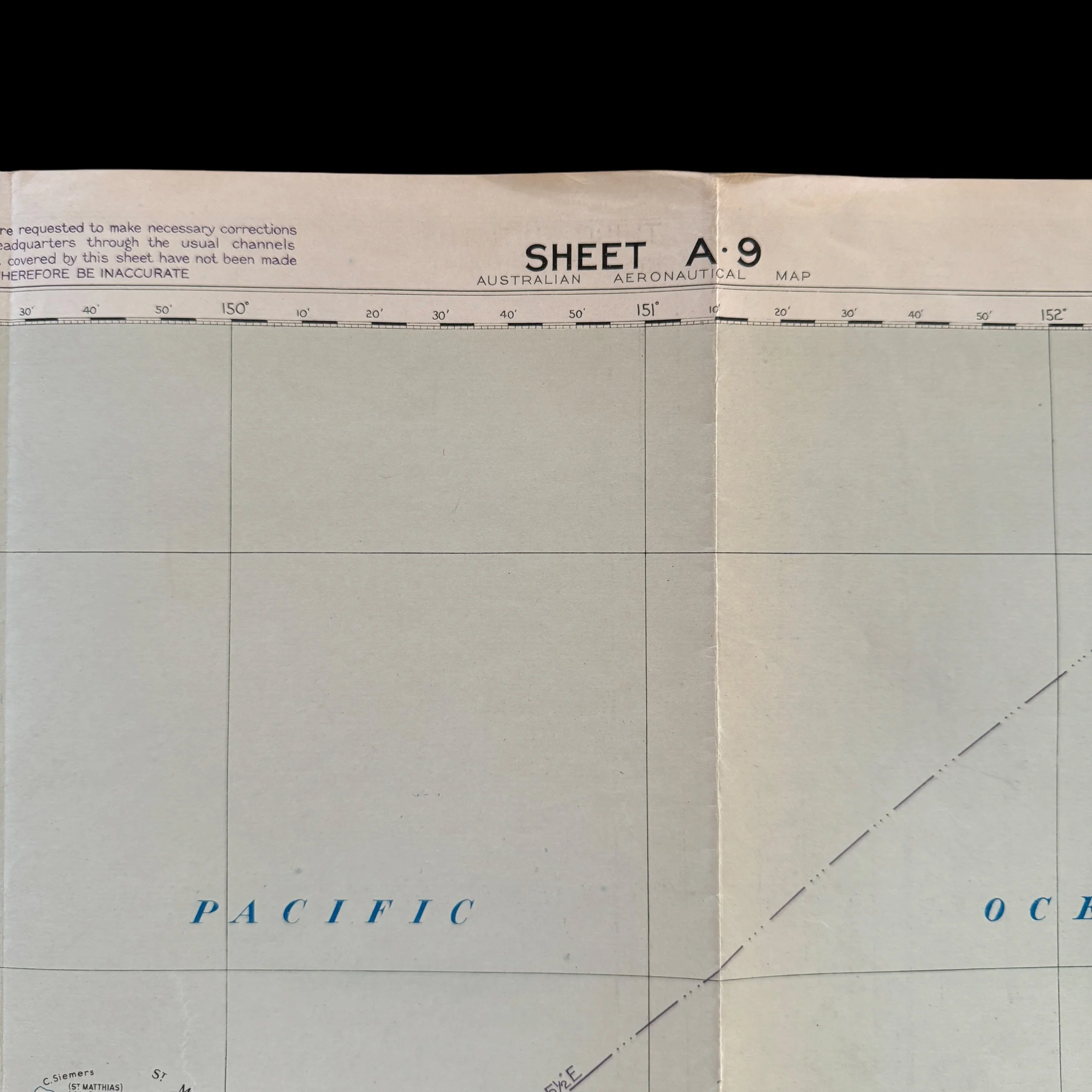

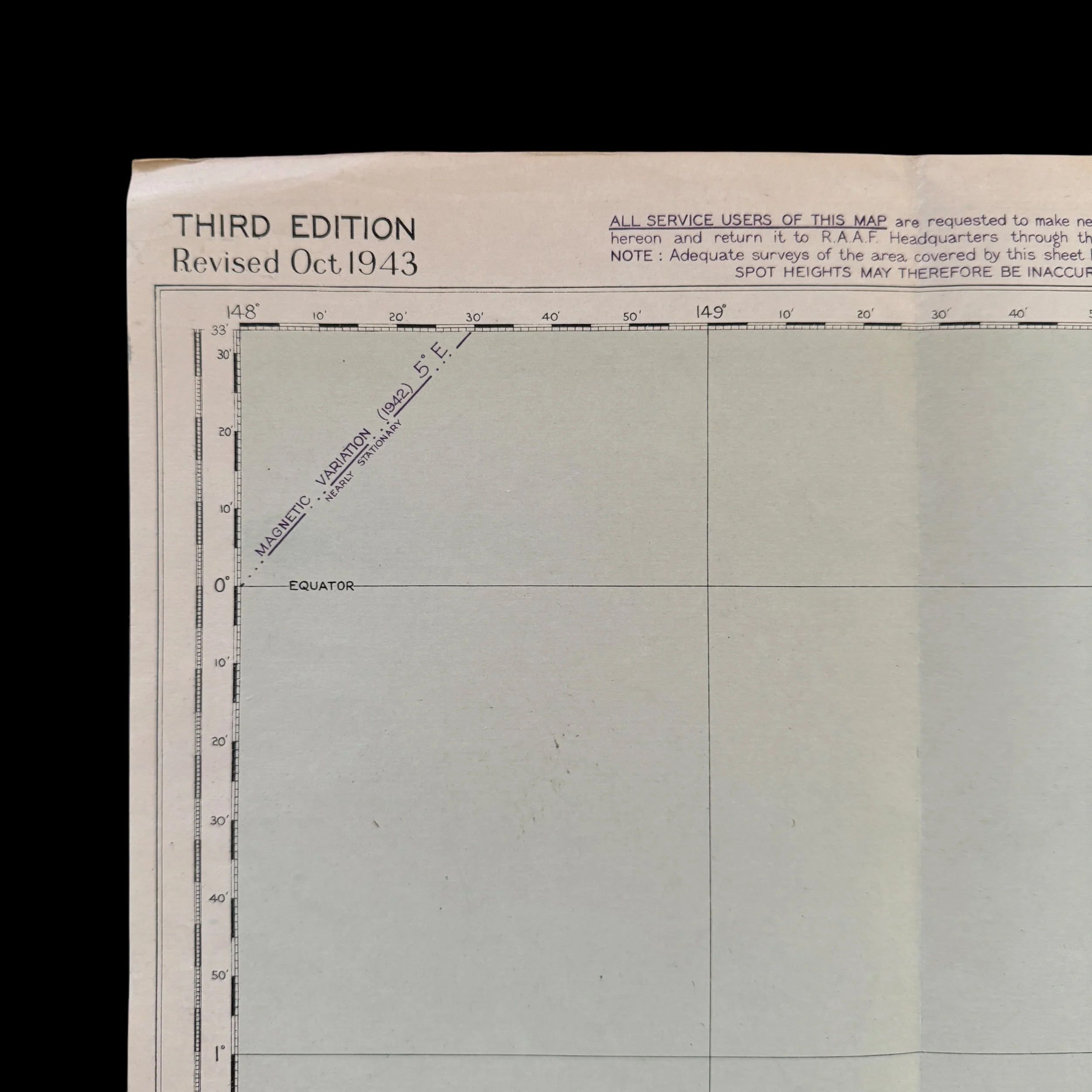
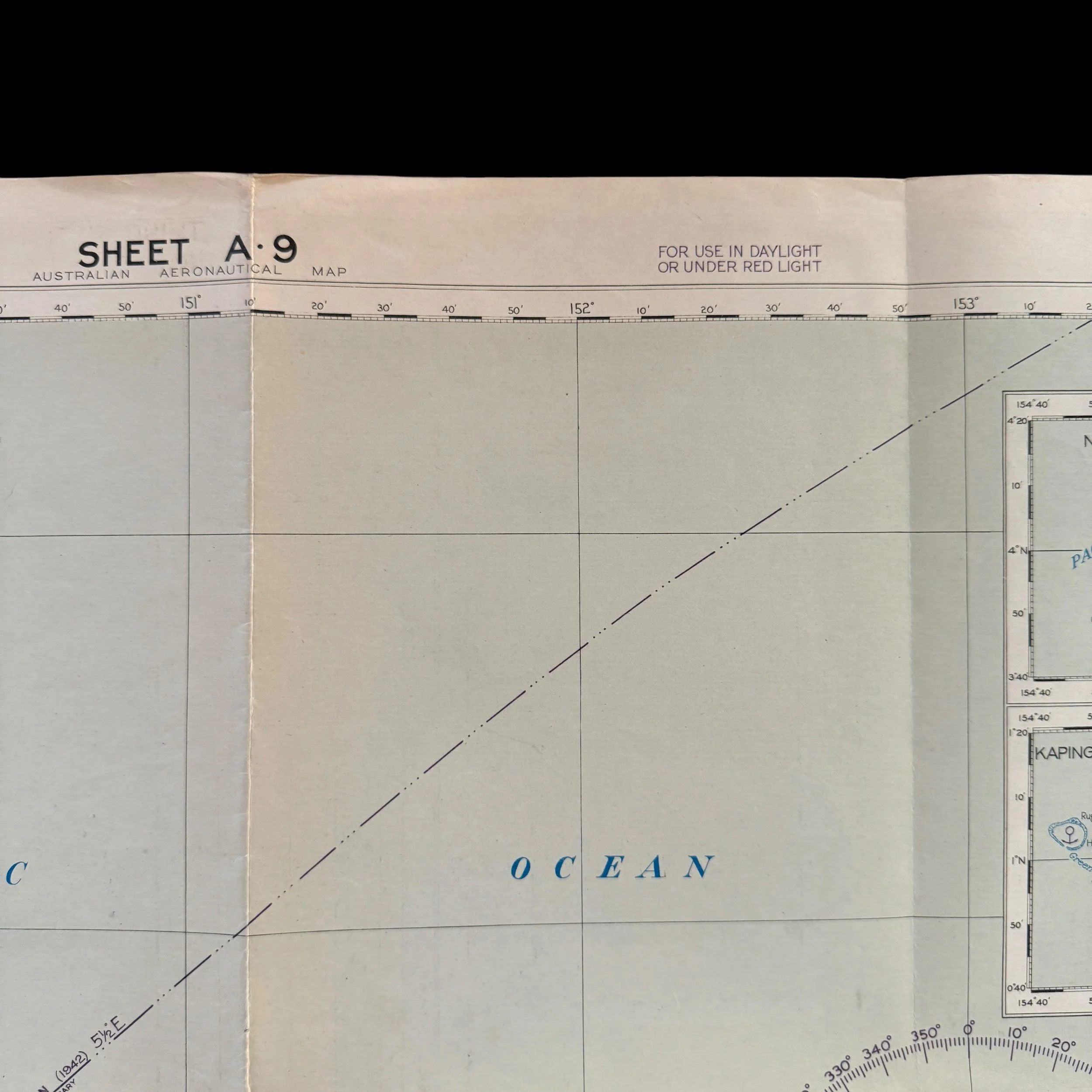
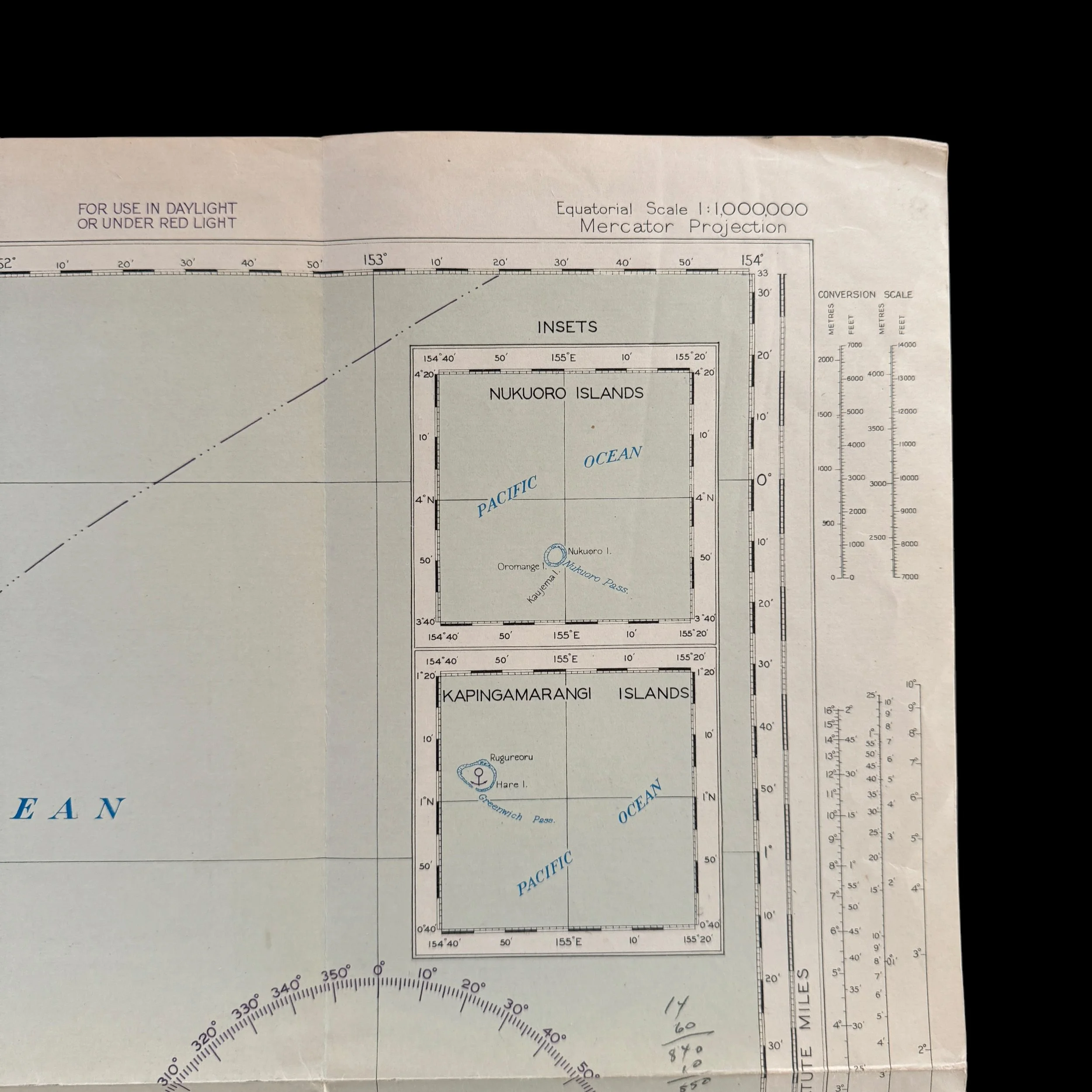
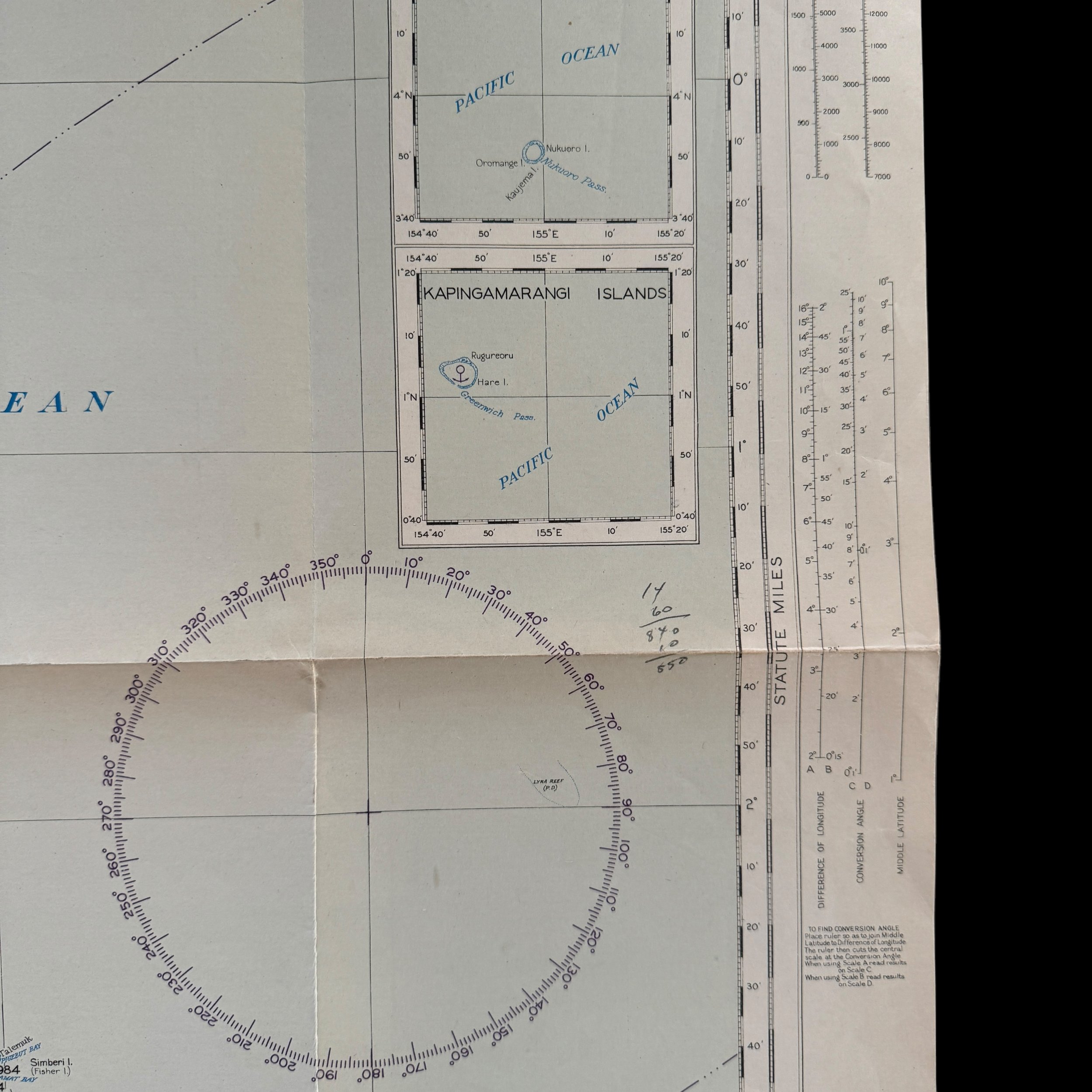
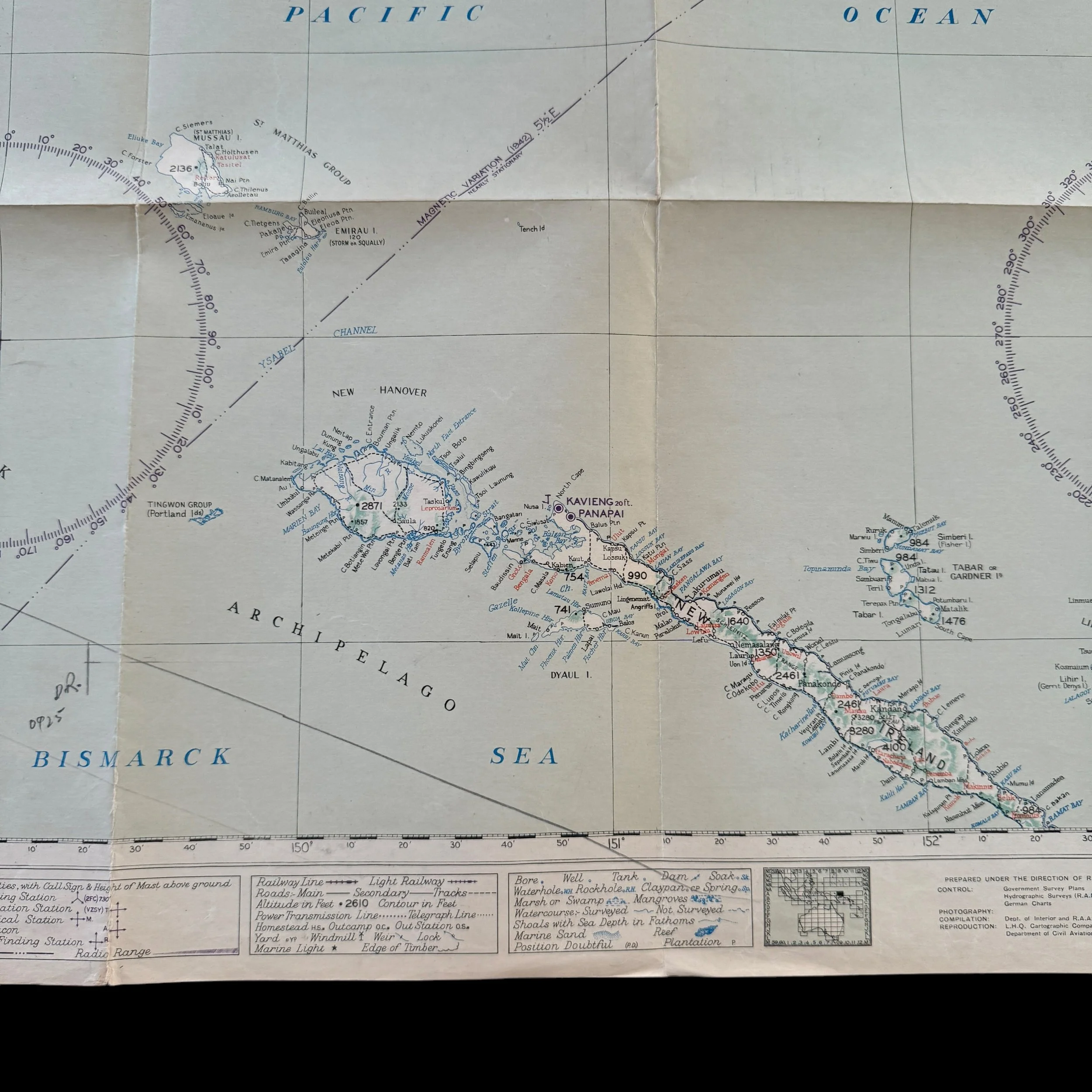
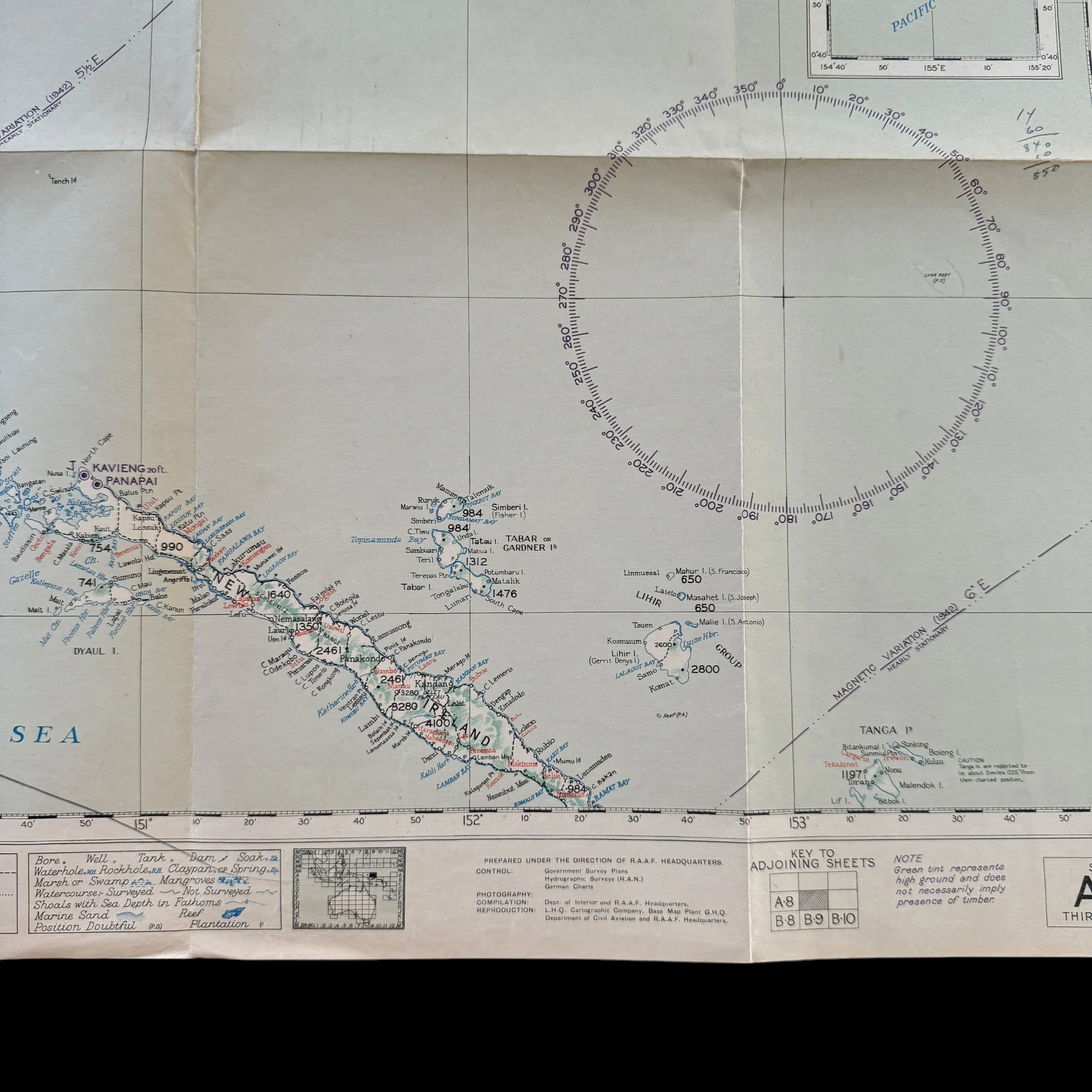
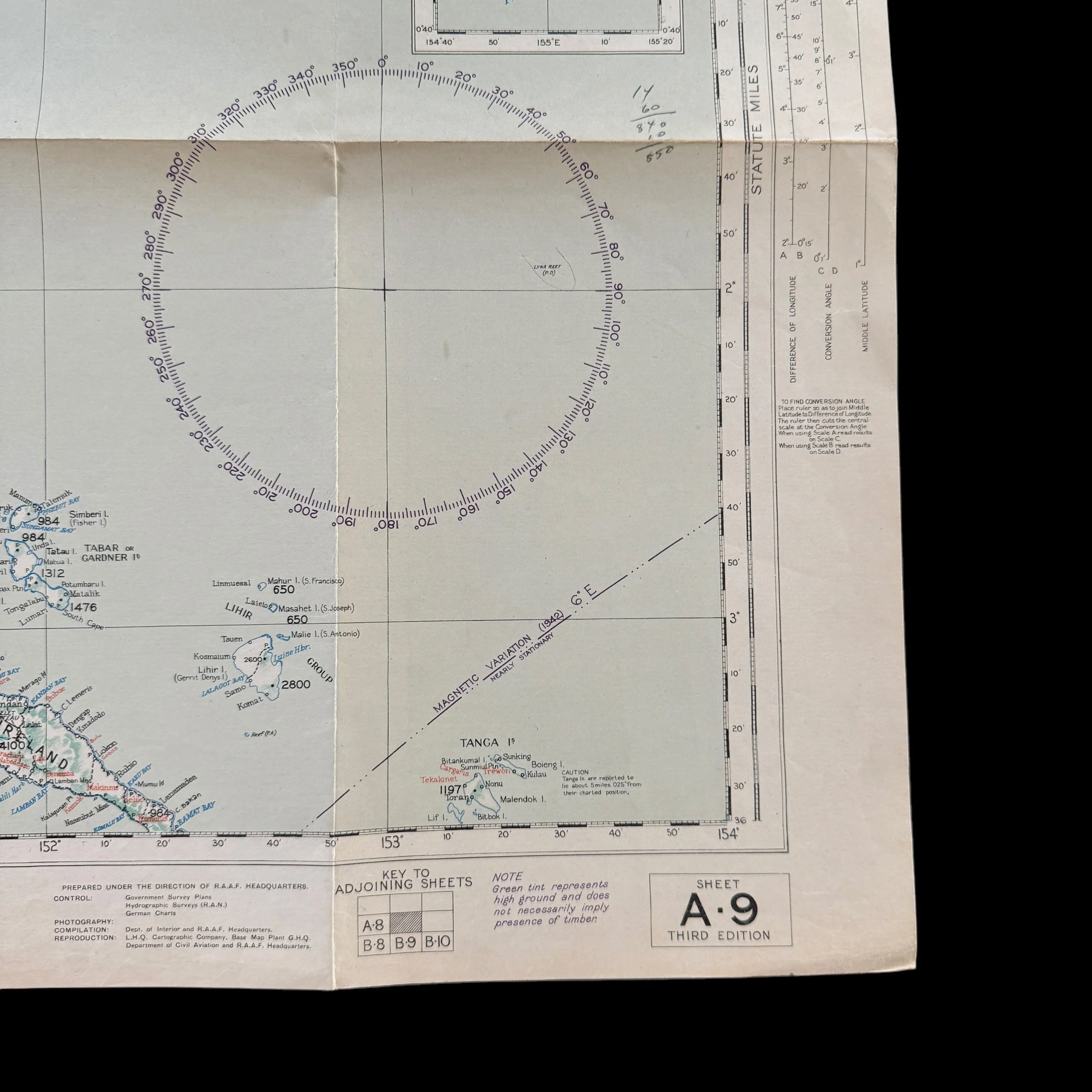
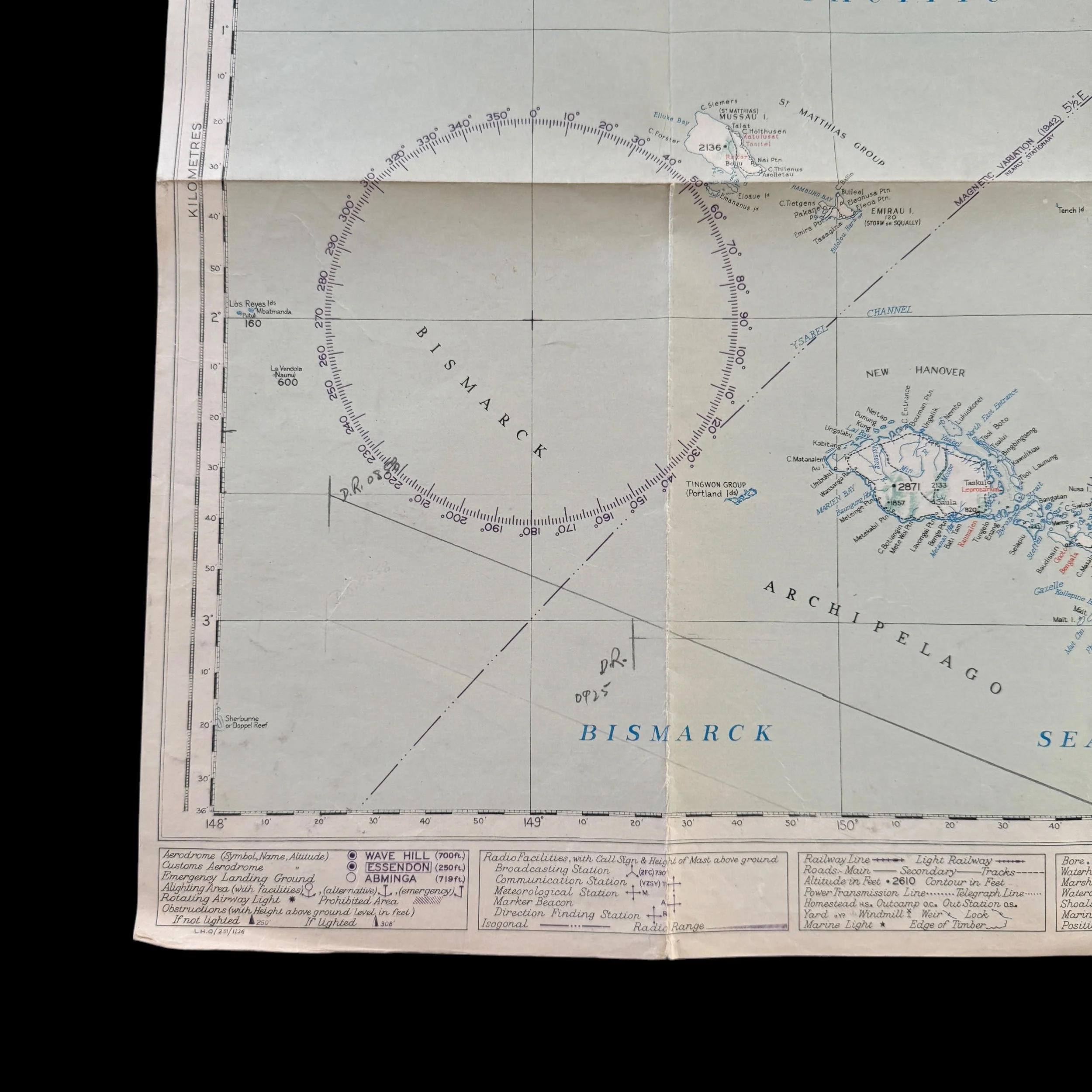
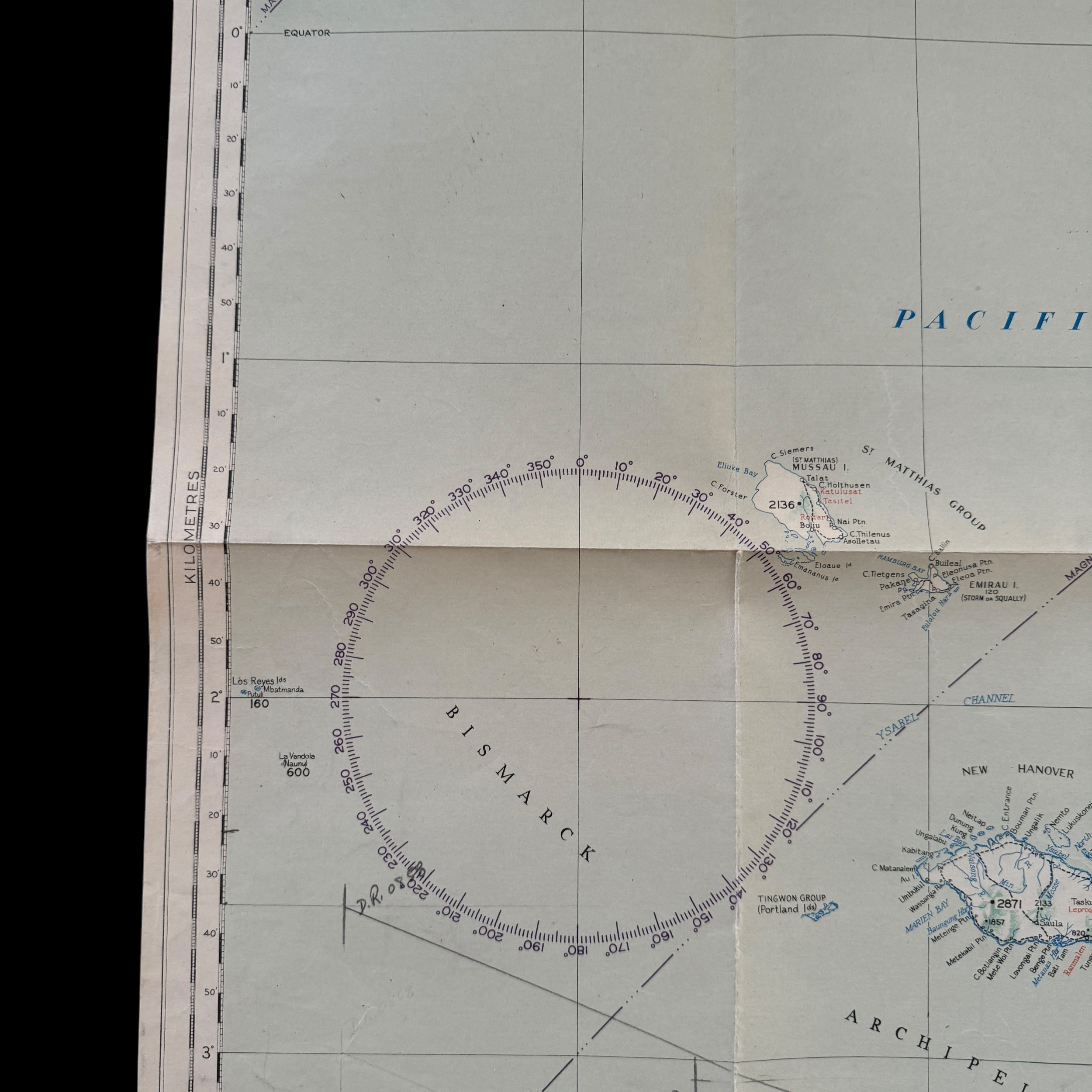
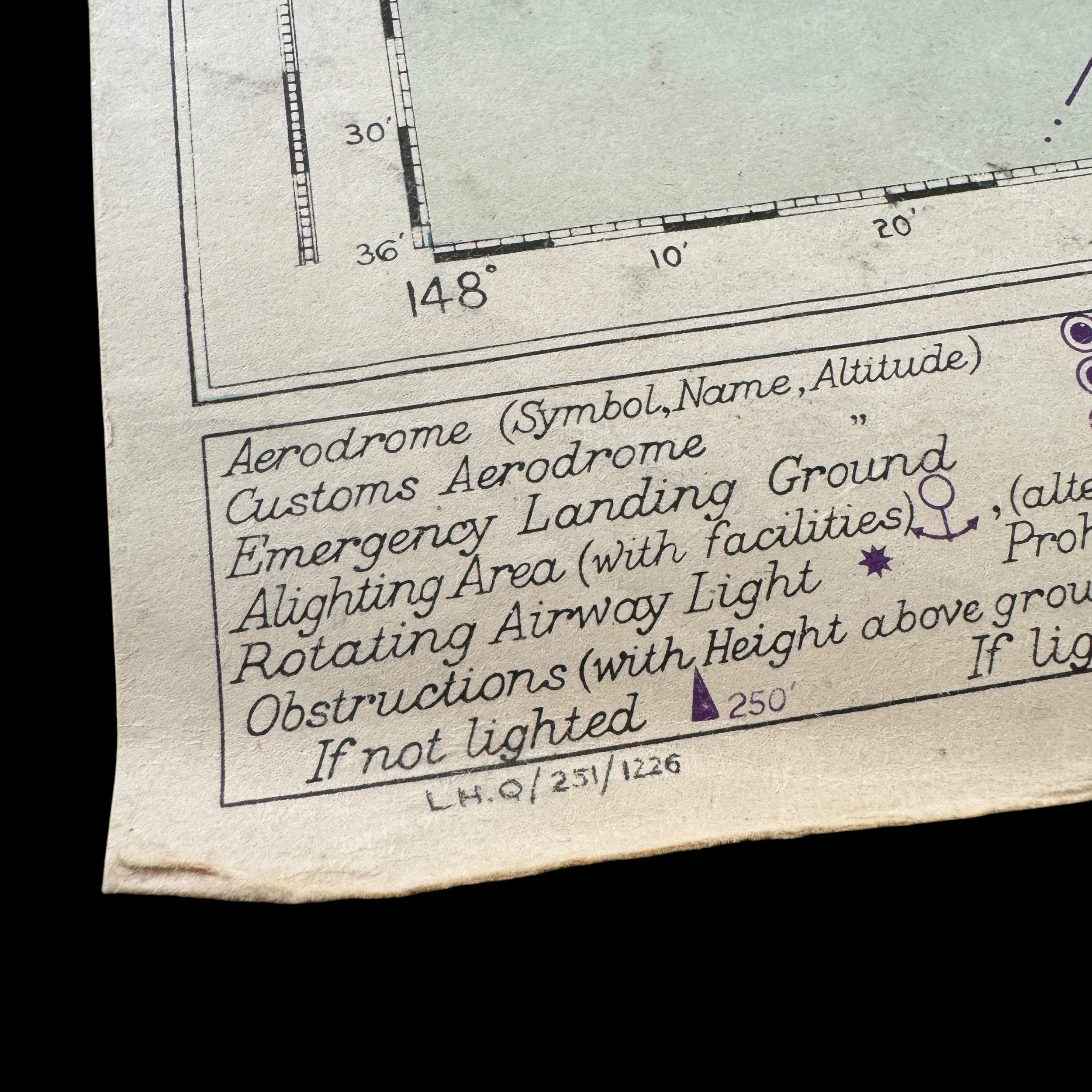
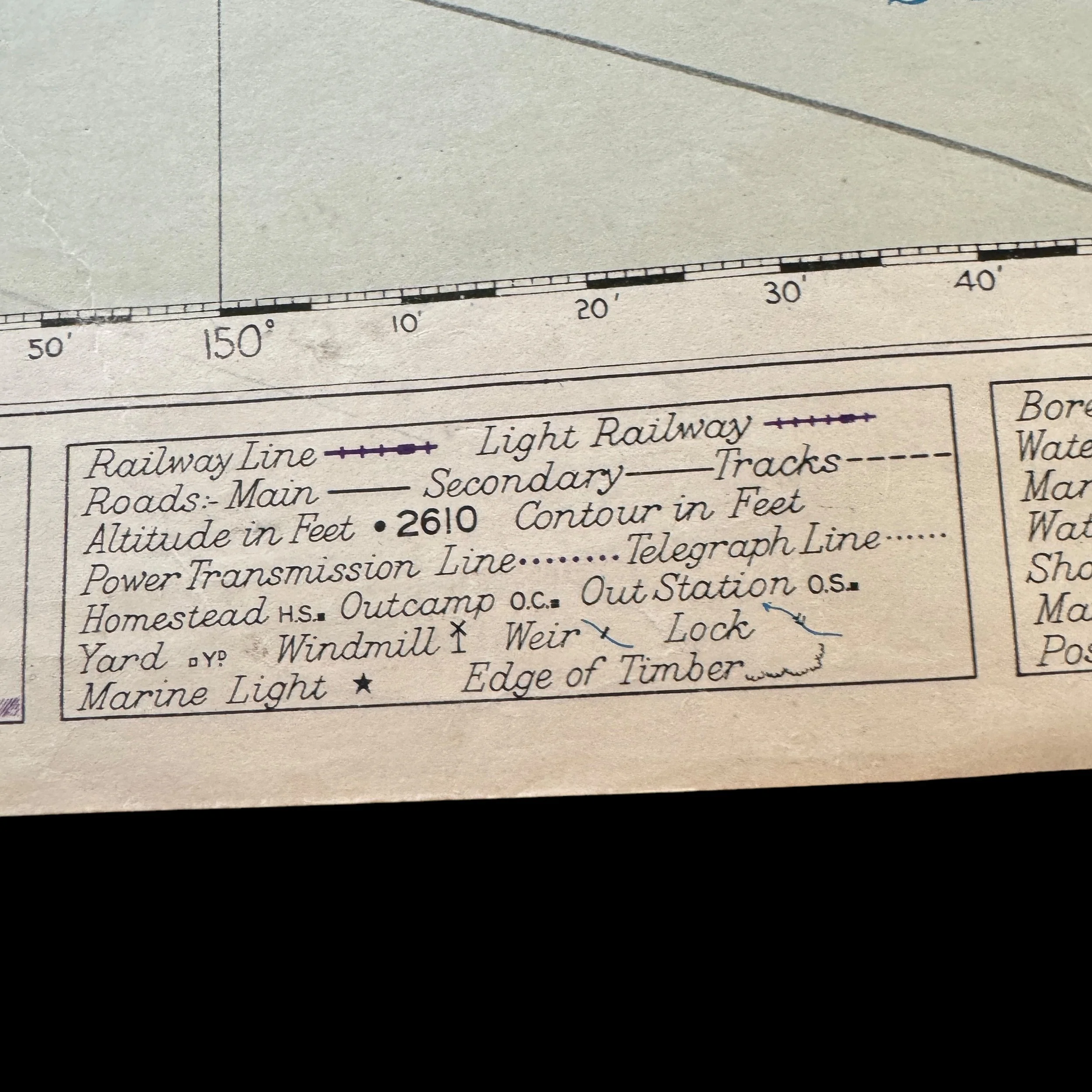
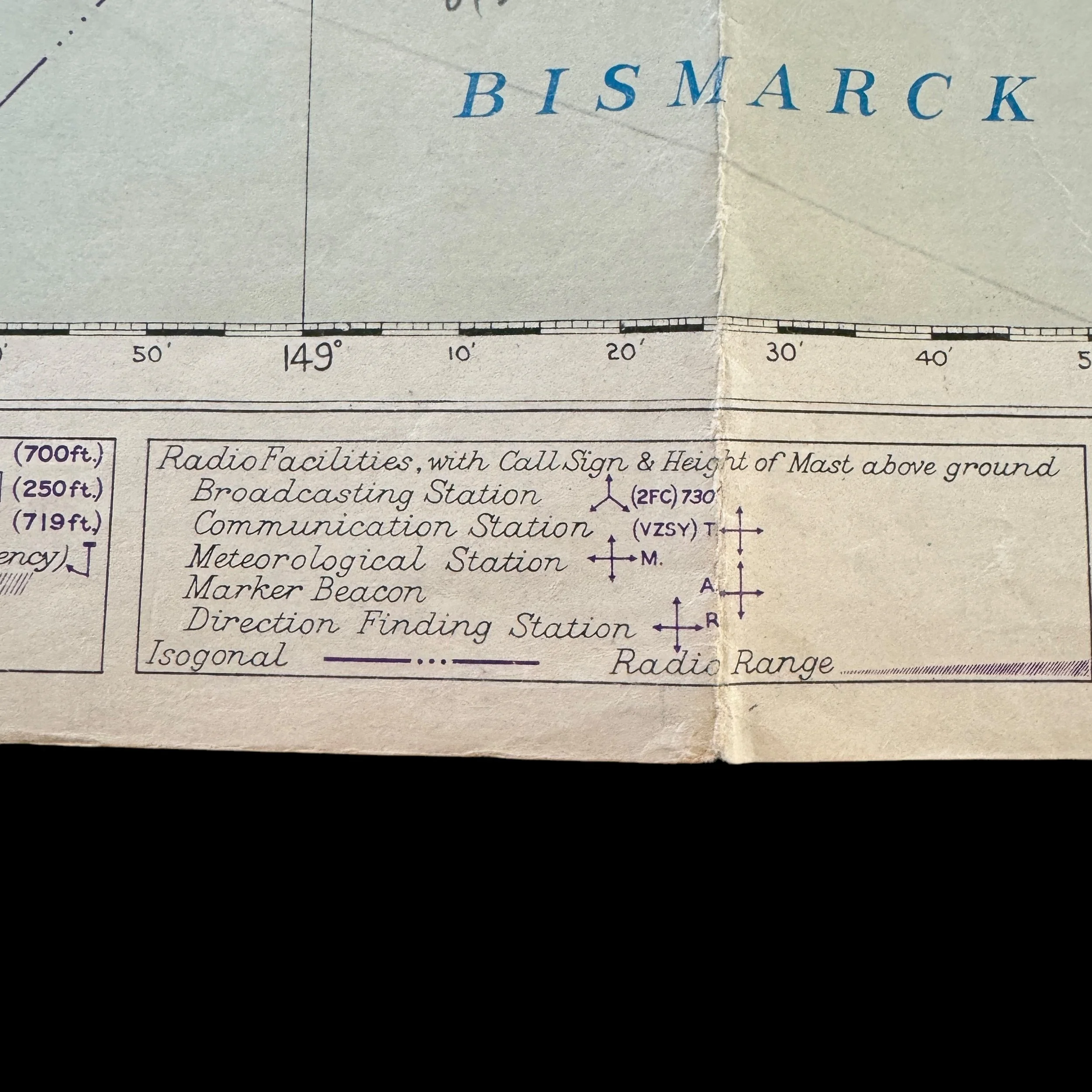
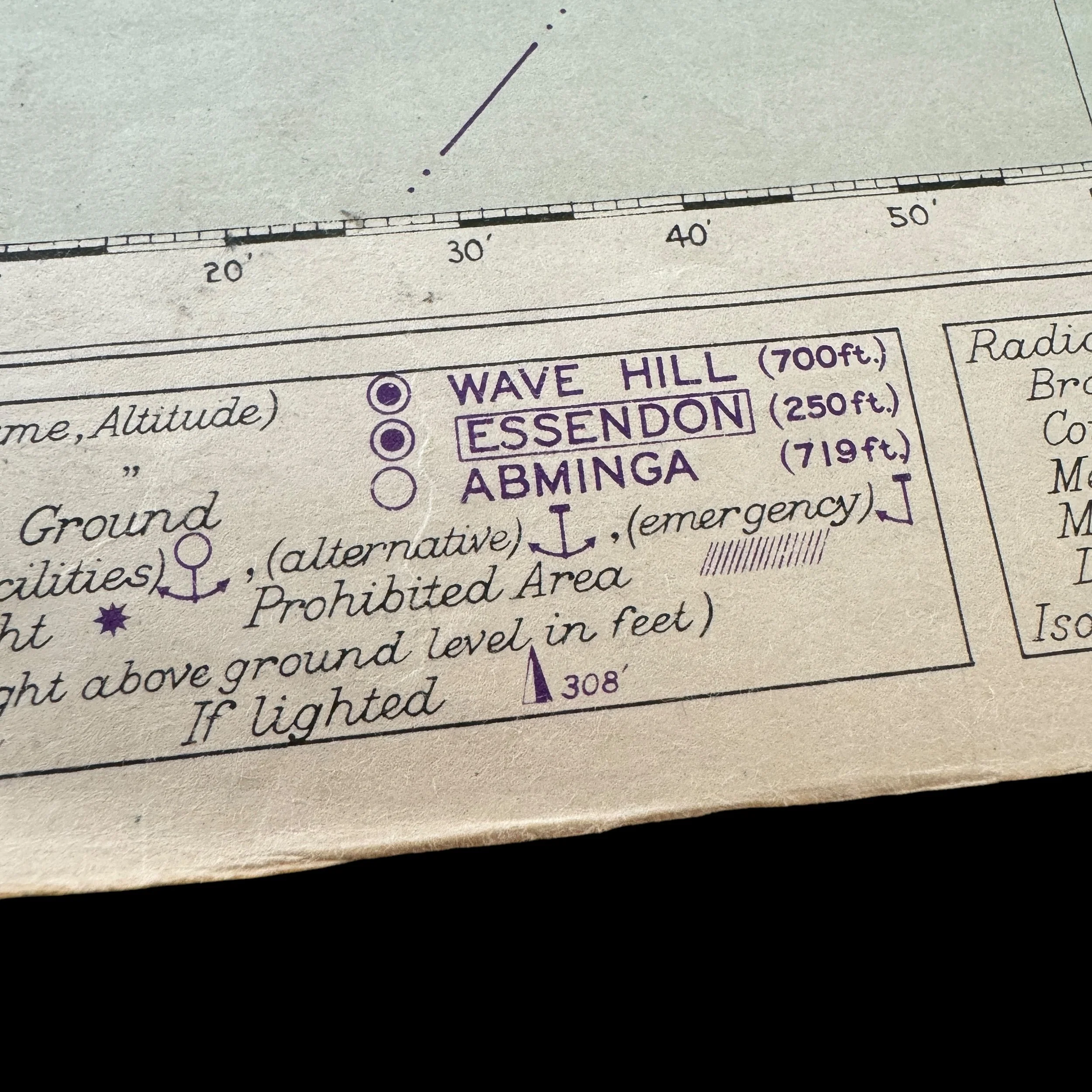
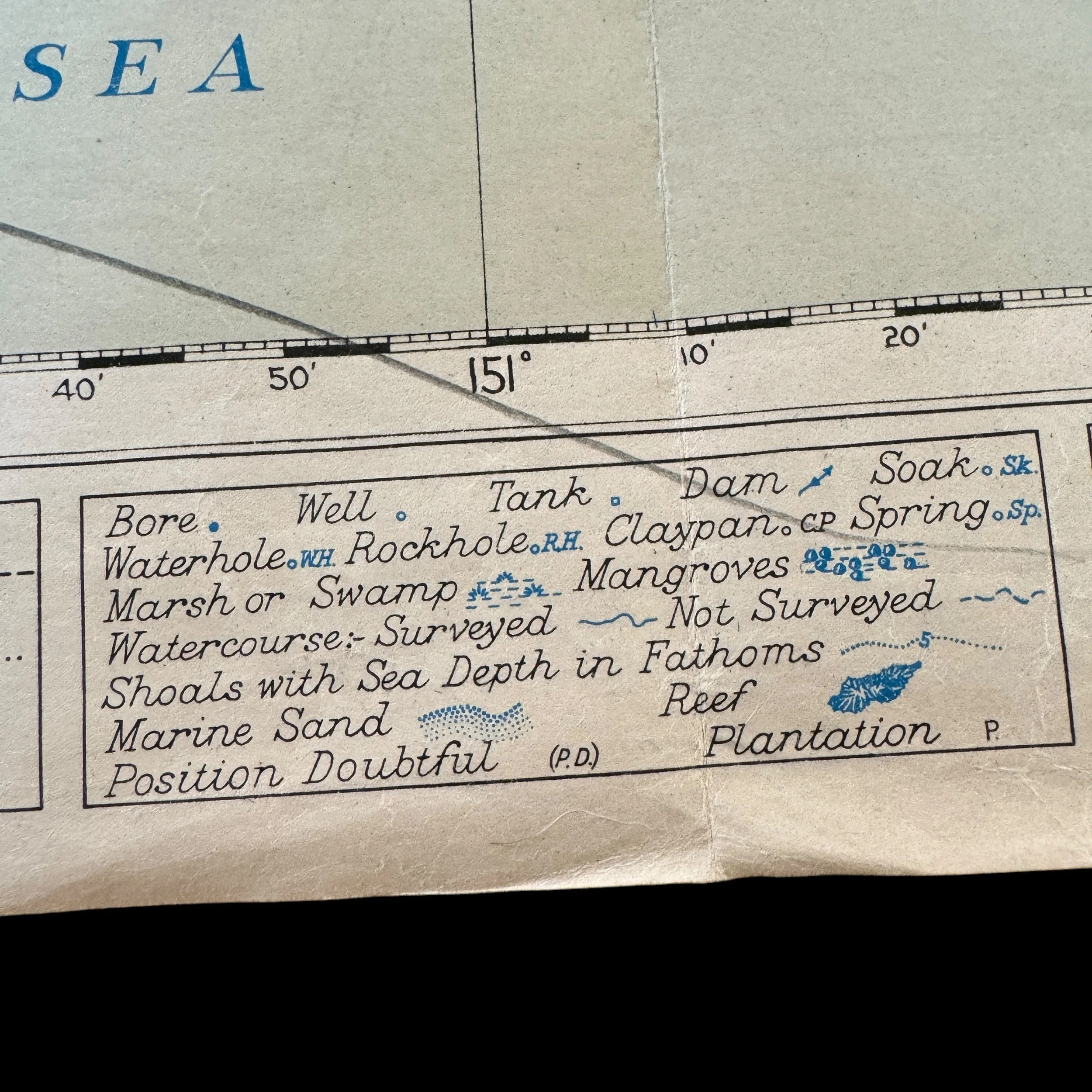
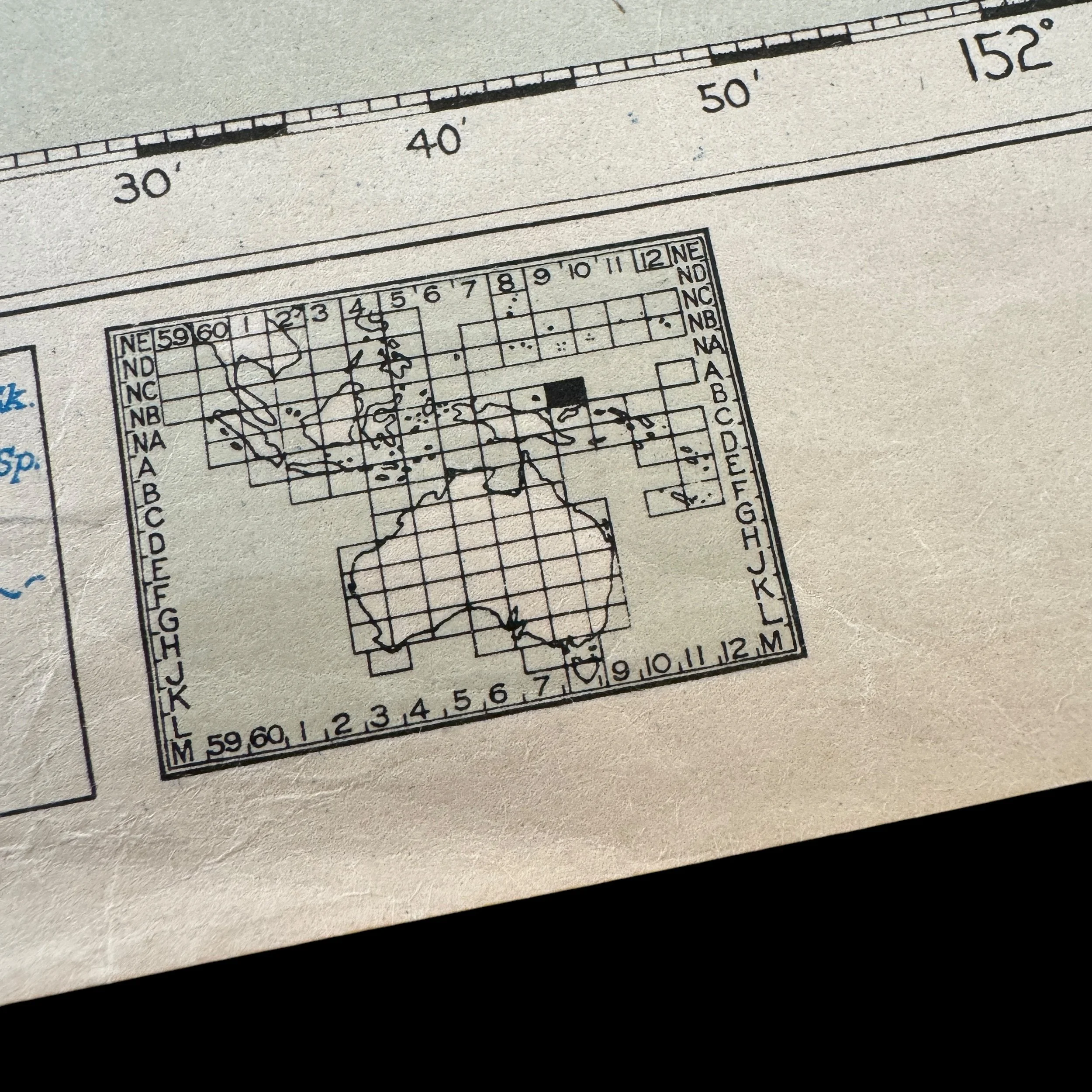
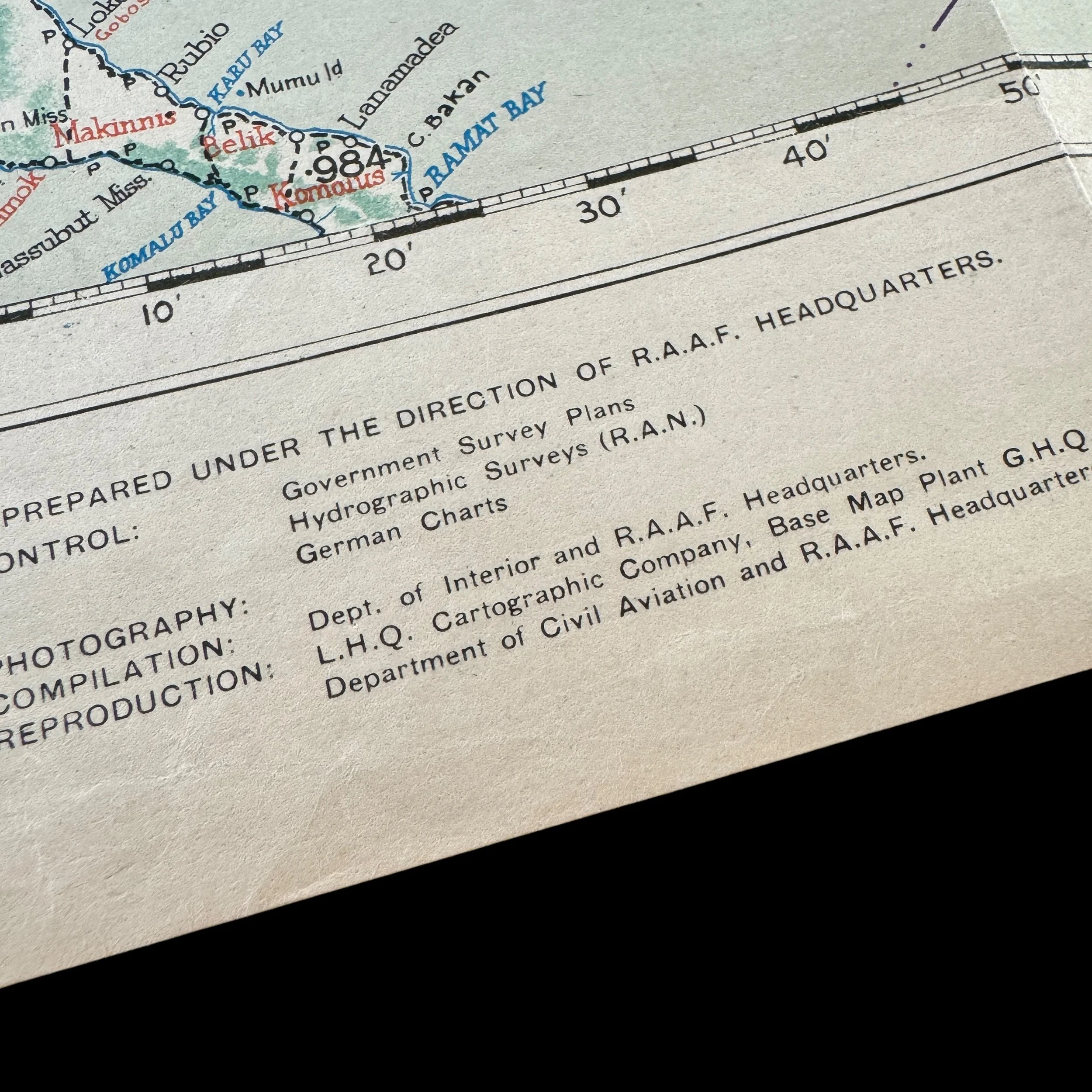
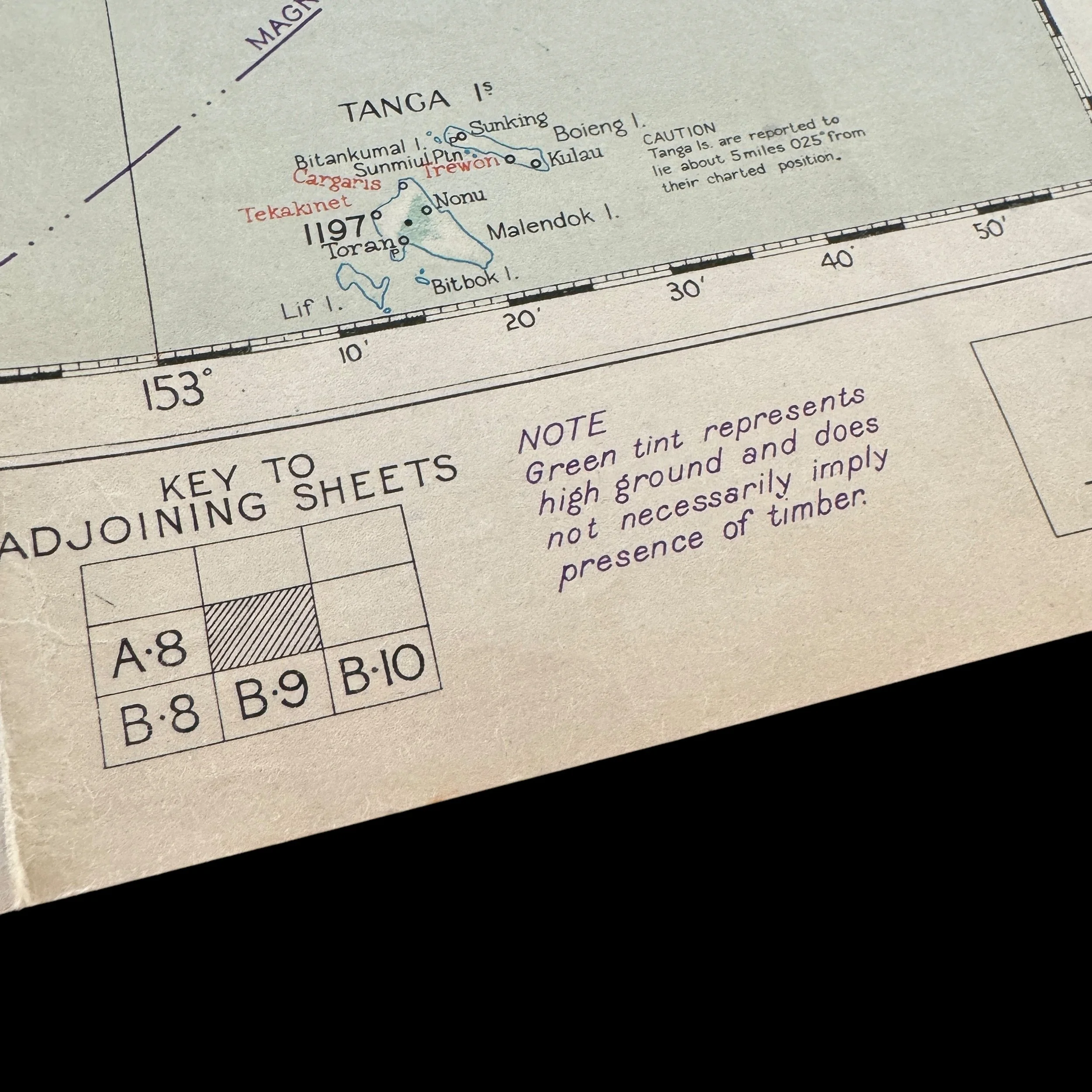
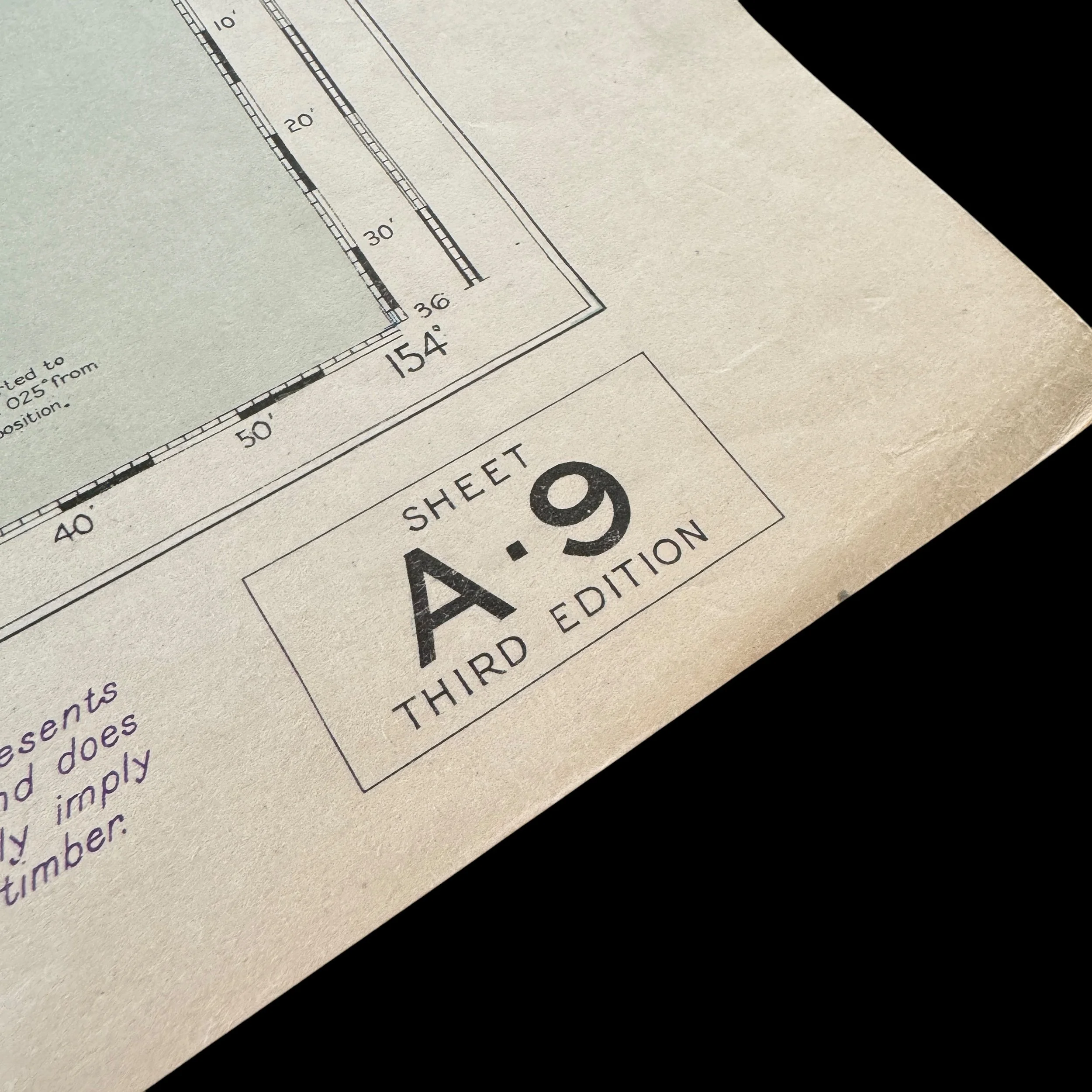
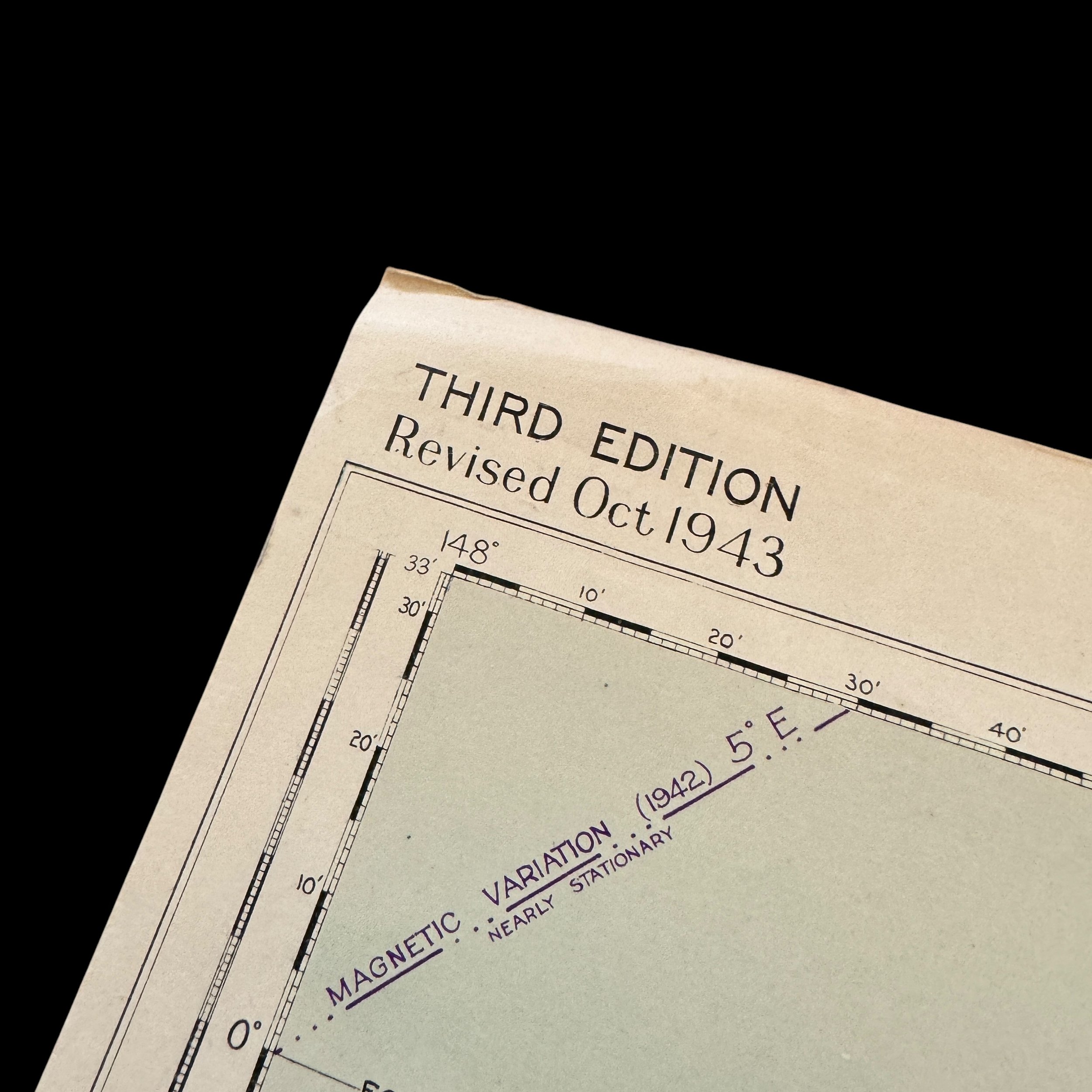

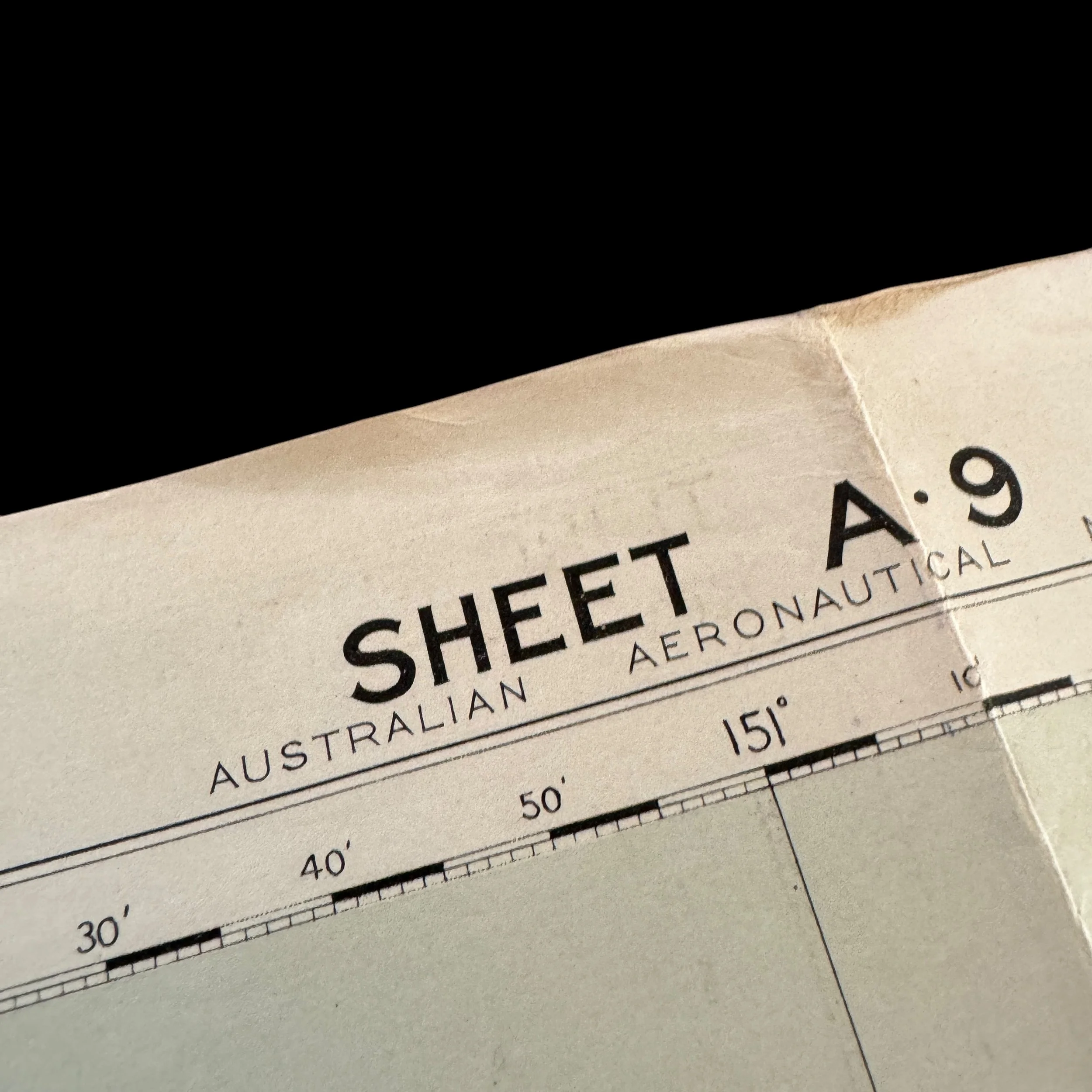
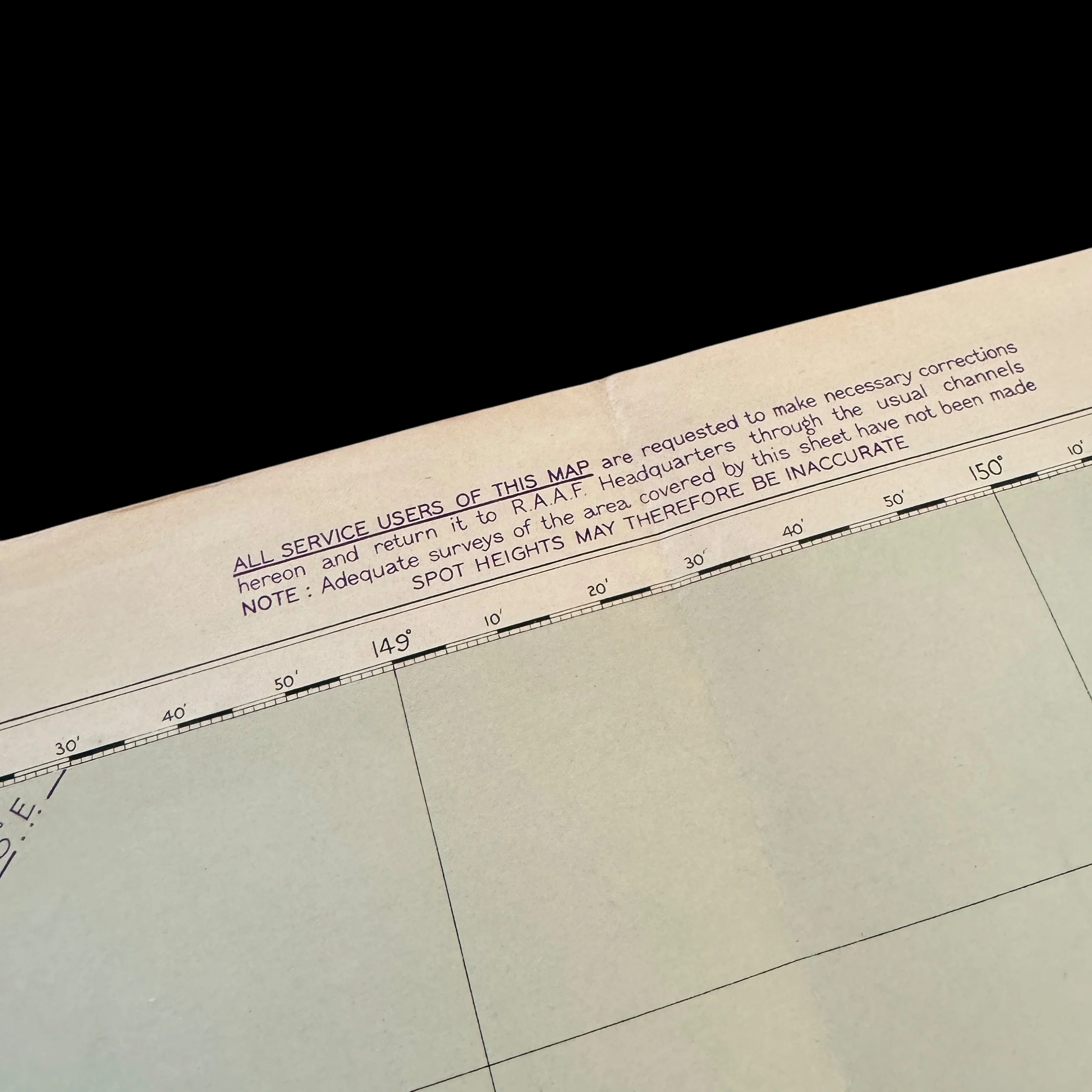
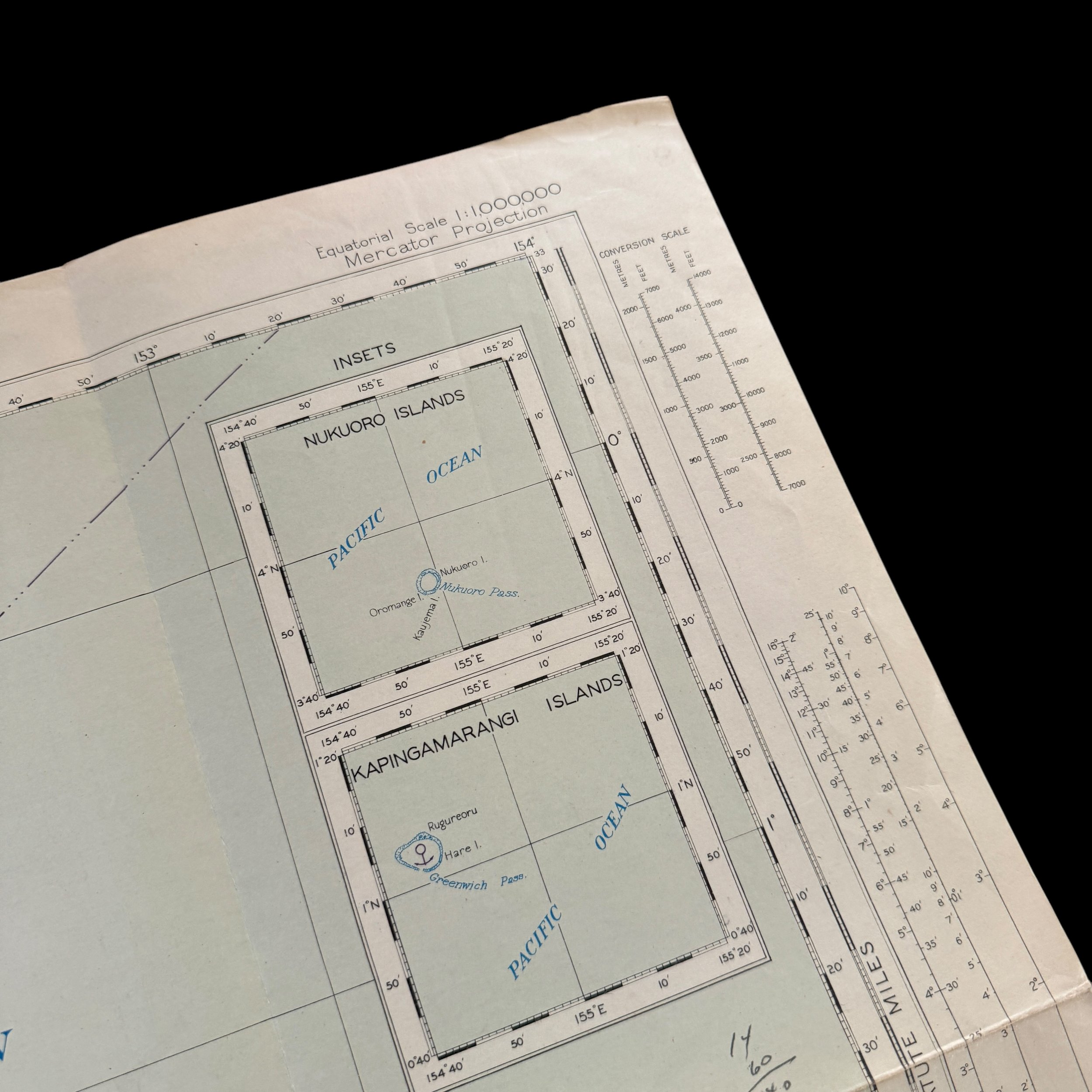
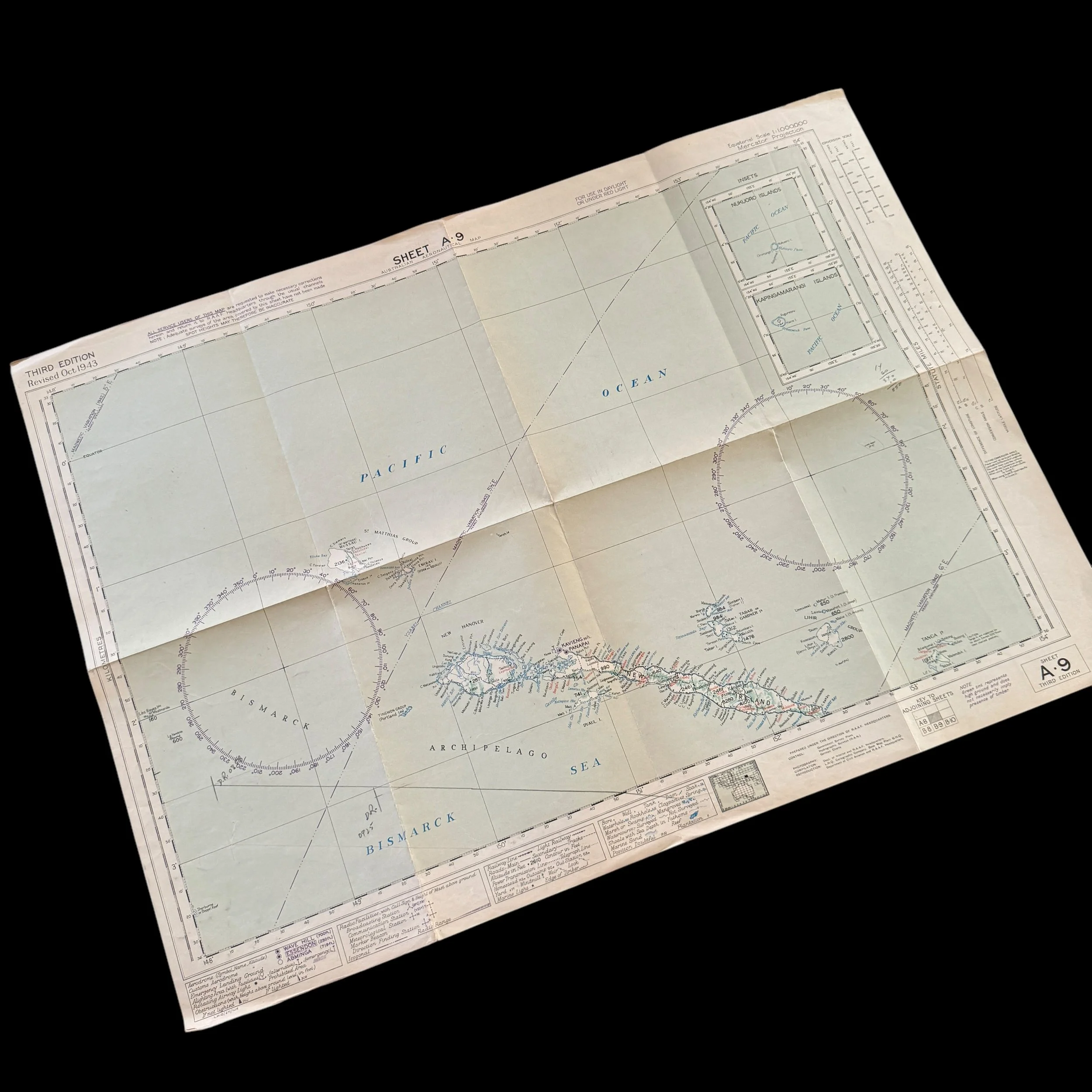
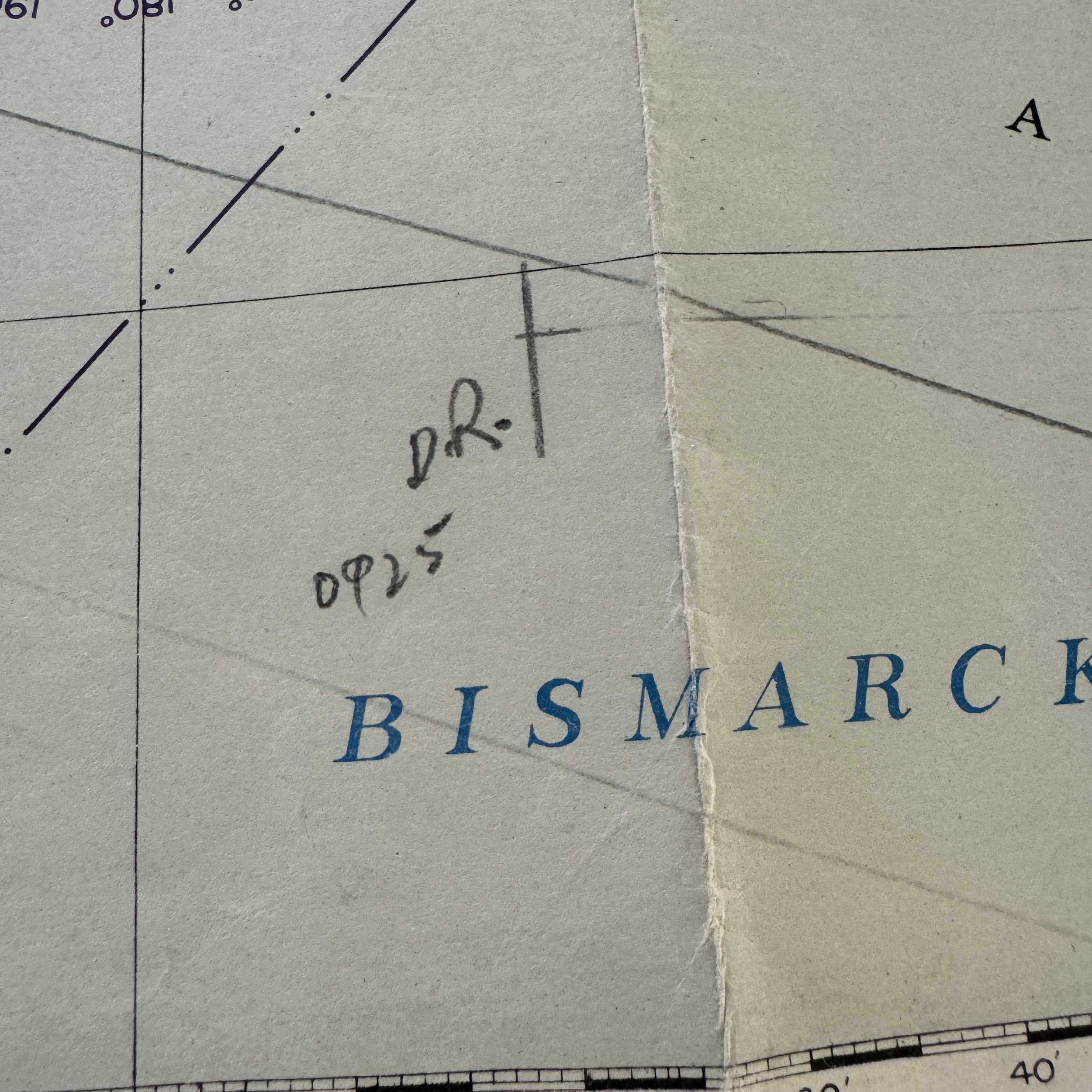

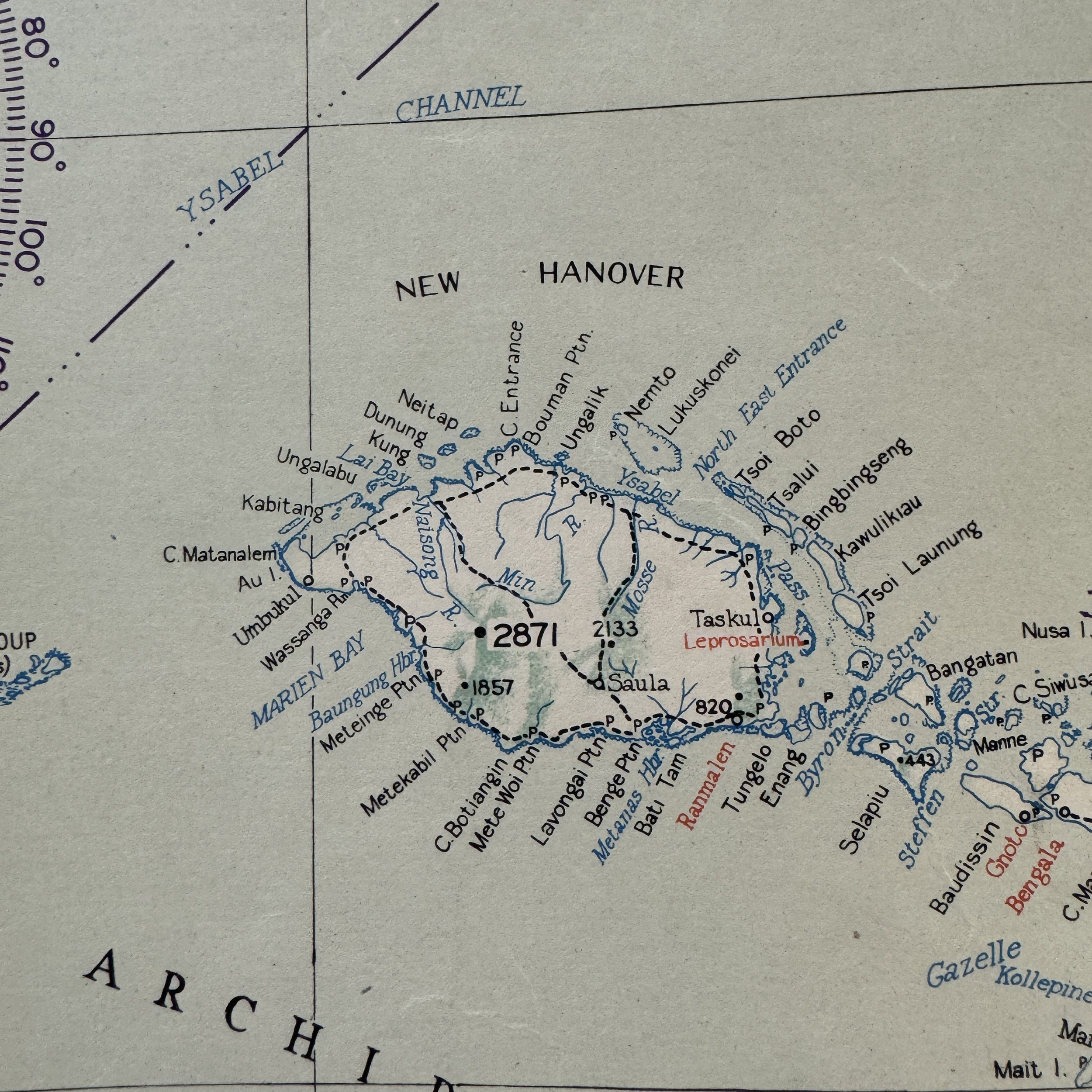
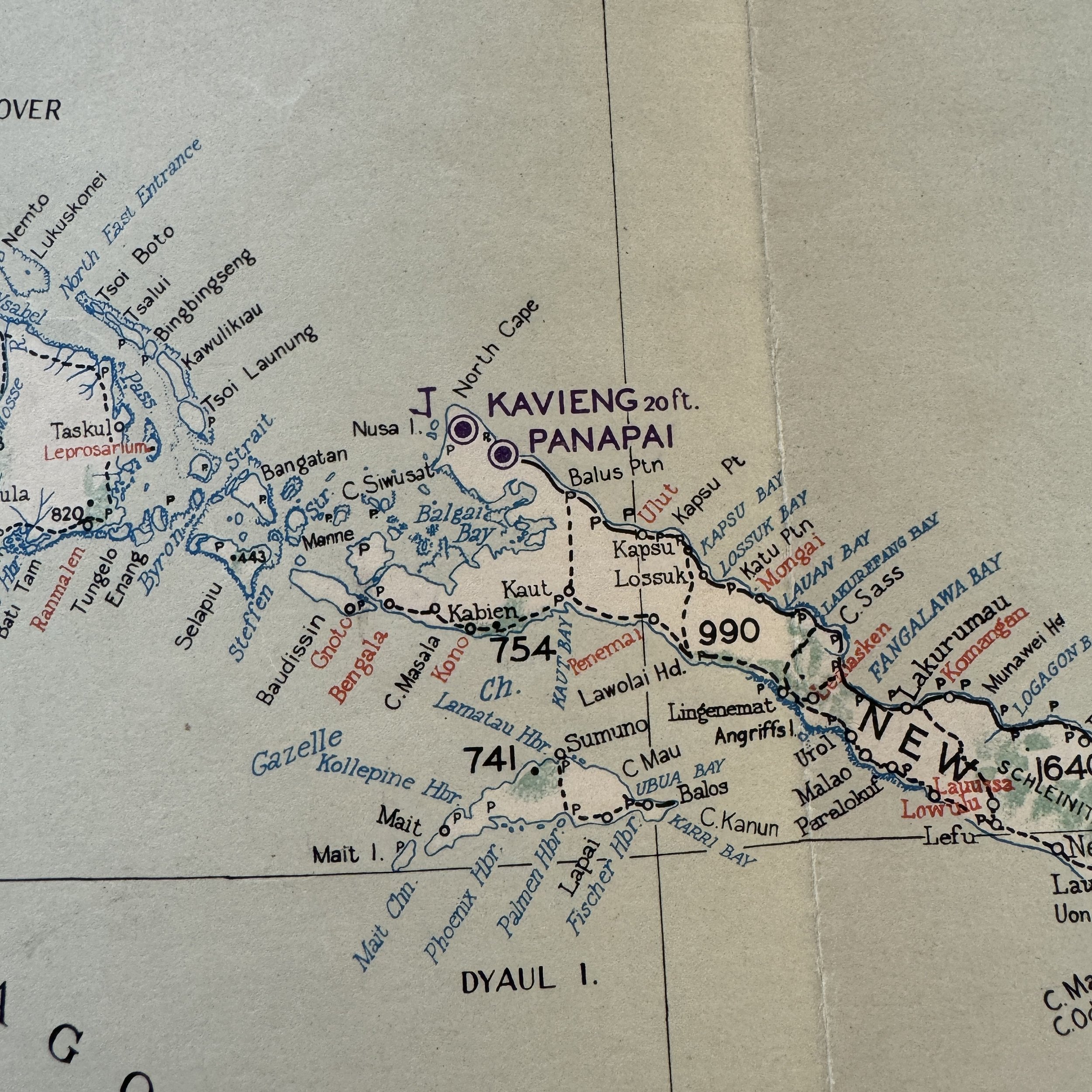




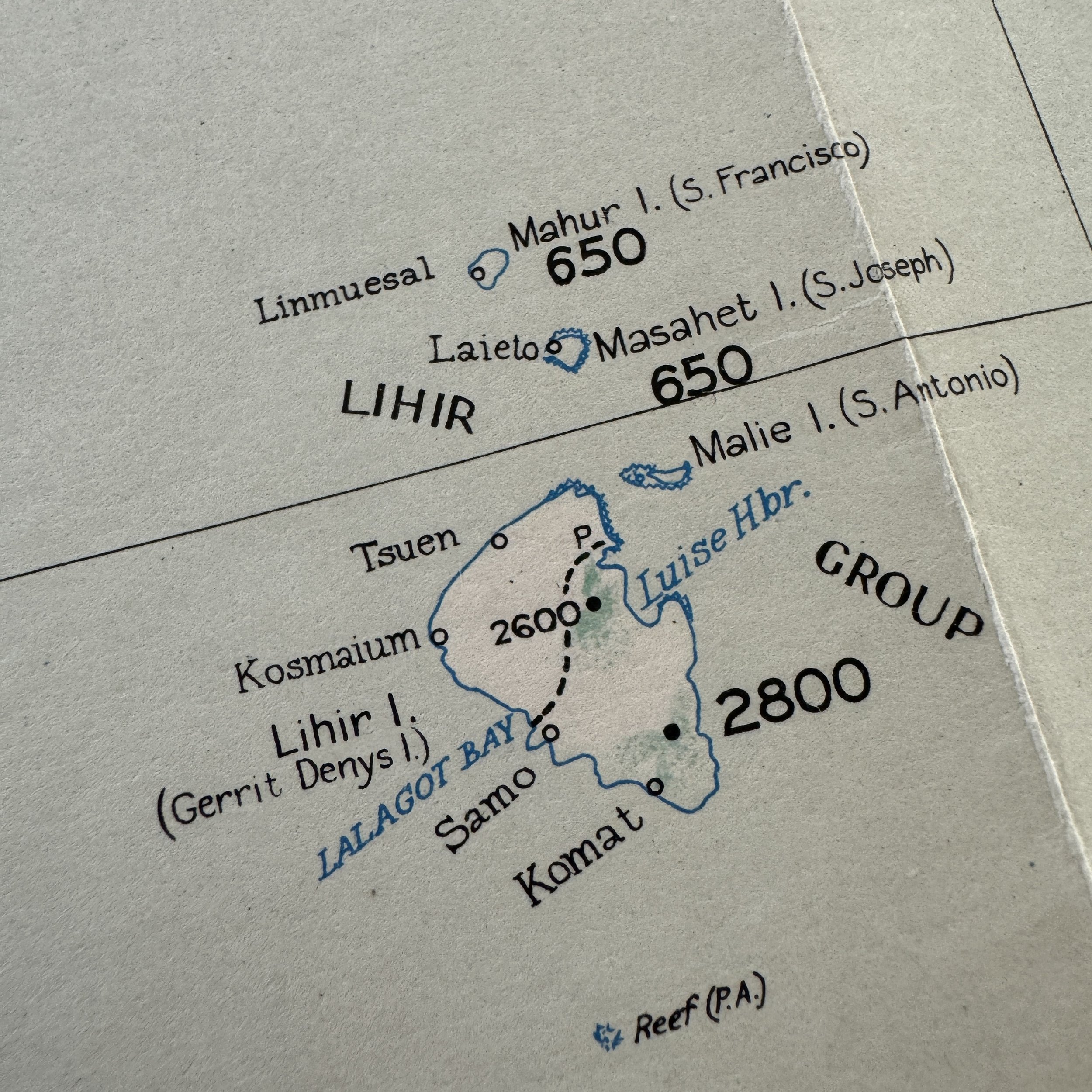

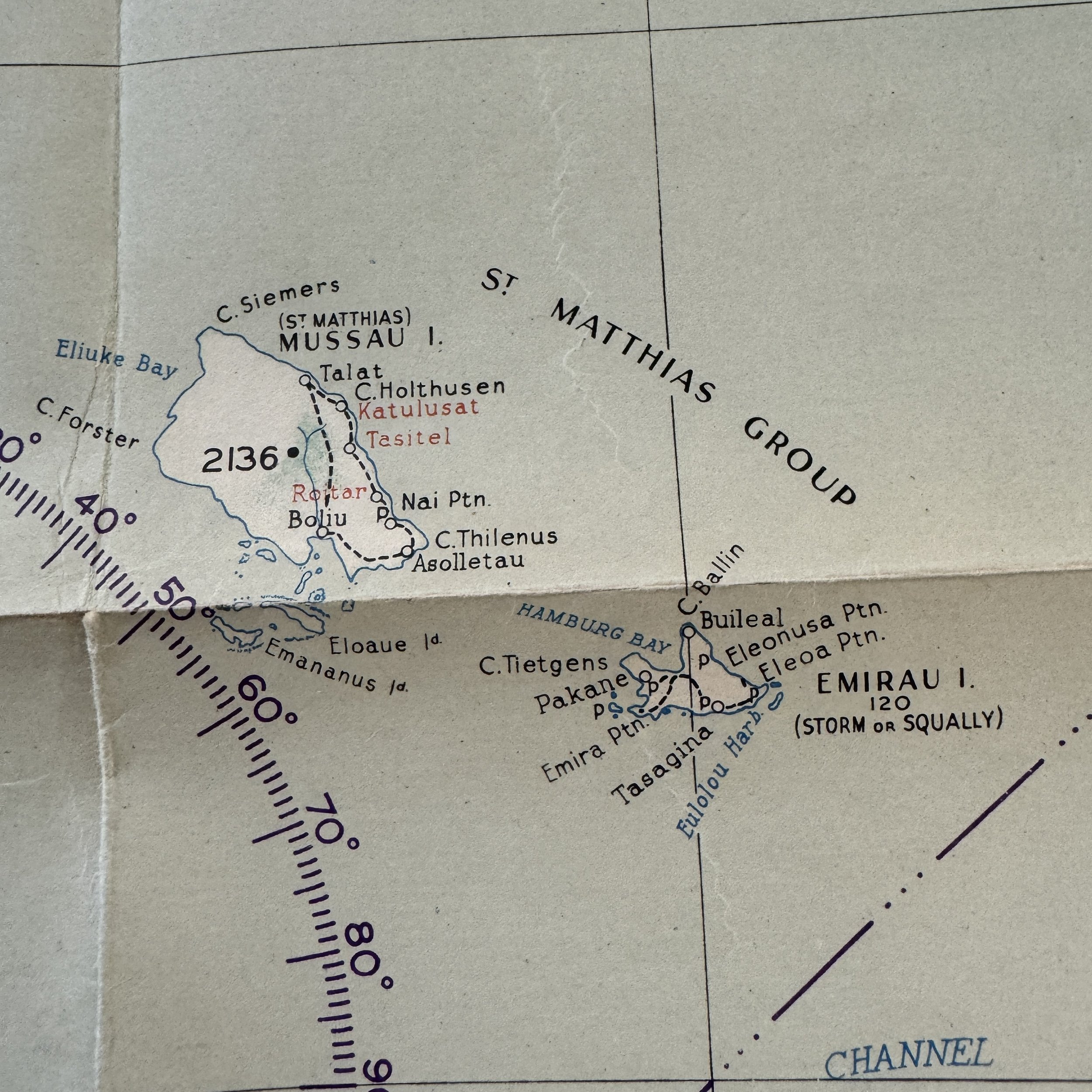

RARE! WWII 1943 U.S. 5th Air Force New Ireland Operation Cartwheel New Guinea Campaign Combat Flight Navigation Map (Combat Marked)
Comes with hand-signed C.O.A. and a full historical write-up
Type: Original World War II U.S. Fifth Air Force Combat Flight Navigation Map
Campaign: Pacific Theater - New Guinea Campaign (1942 - 1945)
Battle/Operation: Operation Cartwheel (June 1943 – January 1944)
Date: October 1943
Size: 21.5 × 30 inches
This exceptionally rare and museum-grade World War II artifact is an original combat flight navigation map, dated October 1943, that was heavily used in battle by the U.S. Fifth Air Force during Operation Cartwheel. This map played a crucial role in aerial operations designed to establish air superiority, provide ground support, and conduct strategic bombing missions against Japanese forces in the South West Pacific Area. The Fifth Air Force, serving as the aerial spearhead of General Douglas MacArthur’s island-hopping campaign, was instrumental in pushing Japanese forces out of New Guinea, the Bismarck Sea, and the Philippines between 1943 and 1945. The combat history embedded in this map reflects the intensity of the battles fought across the Pacific, as Allied forces sought to dismantle Japan’s entrenched military presence in key strongholds.
The map, produced by Land Headquarters under the South West Pacific Area Command, was a product of close collaboration between the U.S. Fifth Air Force and the Royal Australian Air Force. This partnership was essential in executing joint aerial operations against Japanese forces, combining American and Australian airpower to conduct coordinated strikes and reconnaissance missions. The Royal Australian Air Force, under the leadership of Air Vice-Marshal Bill Bostock, played a crucial role by providing air defense, reconnaissance, and logistical support, ensuring the success of major bombing missions. While there were internal tensions between RAAF Command and Air Force Headquarters in Melbourne, the collaboration with the U.S. Fifth Air Force remained highly effective, allowing for seamless coordination in one of the most complex and strategically significant campaigns of the Pacific War.
During Operation Cartwheel, this navigation map would have been used to guide aircraft in executing critical bombing missions aimed at neutralizing Japanese air and naval power. The Fifth Air Force relied heavily on an array of bomber aircraft to deliver precision strikes against enemy strongholds across New Guinea, the Bismarck Archipelago, and the Solomon Islands. Among the most frequently used aircraft was the B-25 Mitchell, a medium bomber designed for low-altitude bombing and strafing runs, often equipped with forward-firing machine guns and skip-bombing capabilities to strike Japanese airfields, supply depots, and shipping convoys. The B-24 Liberator, with its long operational range and heavier bomb payload, was deployed for high-altitude strategic bombing, targeting major Japanese strongholds such as Rabaul and Wewak, which were crucial hubs for enemy reinforcements. The A-20 Havoc, a light attack bomber, provided tactical bombing and close air support, proving highly effective in low-level precision strikes against enemy fortifications and troop concentrations. These bombers operated under the protection of P-38 Lightning fighter escorts, which ensured air superiority by engaging Japanese aircraft in dogfights and defending Allied bombing formations.
This U.S. Fifth Air Force combat map was actively used in some of the most intense aerial battles of the Pacific, particularly in operations designed to isolate and neutralize the Japanese stronghold at Rabaul. The multi-phase Allied campaign focused on severing Japanese supply lines and destroying key military installations in New Britain, New Ireland, and the Solomon Islands. The Fifth Air Force launched continuous bombing raids against heavily fortified Japanese positions, while also carrying out precision strikes on airfields at Wewak, Hollandia, and Rabaul to systematically dismantle Japan’s ability to conduct air operations. The success of these missions directly contributed to weakening Japanese air power, paving the way for future Allied offensives in the Pacific.
This World War II artifact is a tangible link to the relentless air battles fought over the South Pacific, reflecting the bravery and determination of the U.S. Fifth Air Force and its Royal Australian Air Force allies. It serves as a historic document of the strategic air campaign that helped cripple Japanese resistance, clear the way for Allied ground forces, and set the stage for the final push toward Japan. This navigation map is not only a testament to wartime ingenuity and coordination but also a once-in-a-lifetime piece of history, directly tied to one of the most decisive aerial operations of World War II.
The U.S. Fifth Air Force and Their Aerial Missions During Operation Cartwheel (1943–1944)
The U.S. Fifth Air Force played a decisive role in the execution of Operation Cartwheel, the Allied campaign designed to neutralize the major Japanese stronghold at Rabaul and weaken the Japanese position in the South West Pacific. From 1943 to 1944, the Fifth Air Force carried out relentless aerial missions over key locations, including New Ireland and its surrounding smaller islands. These operations were crucial in establishing air superiority, cutting off Japanese supply lines, and supporting amphibious invasions that were essential for the success of the broader island-hopping campaign led by General Douglas MacArthur.
Operation Cartwheel was launched in mid-1943 as a coordinated effort between U.S. and Australian forces to systematically isolate Rabaul, the primary Japanese naval and air base in the Bismarck Archipelago. New Ireland, situated to the northeast of New Britain and adjacent to Rabaul, was heavily fortified by the Japanese and served as a critical outpost for their defensive network. The islands surrounding New Ireland, including Mussau, Emirau, and the Saint Matthias Group, provided the Japanese with forward operating bases that facilitated air raids, reconnaissance missions, and the resupply of their forces across the region. The Fifth Air Force’s aerial missions targeted these strategic locations with the objective of crippling Japan’s ability to reinforce Rabaul and maintain a defensive perimeter in the South Pacific.
One of the most significant operations conducted by the Fifth Air Force during this campaign was the sustained bombing of Kavieng, the largest town on New Ireland and a major Japanese military hub. Kavieng was home to a well-developed airfield, seaplane base, and naval installations, making it a key target for Allied bombers. Throughout late 1943 and into 1944, the Fifth Air Force launched continuous bombing raids against Kavieng, using aircraft such as the B-24 Liberator for high-altitude strategic bombing and the B-25 Mitchell for low-level attacks. These missions aimed to destroy Japanese infrastructure, including airstrips, fuel depots, barracks, and coastal defenses. In addition to traditional bombing runs, the Fifth Air Force employed skip-bombing techniques to target Japanese ships attempting to transport reinforcements and supplies between Rabaul and New Ireland.
Surrounding islands, such as Emirau, played a vital role in the broader campaign. Emirau was occupied by the Japanese as an auxiliary airbase and staging ground for their forces. Recognizing its strategic importance, the Fifth Air Force conducted reconnaissance and bombing missions over Emirau, softening Japanese defenses in preparation for its eventual seizure by Allied forces in March 1944. This effort prevented the Japanese from using Emirau as a fallback position after Rabaul was effectively neutralized.
The smaller islands near New Ireland, including Mussau and the Saint Matthias Group, also witnessed significant aerial operations. These islands were used by the Japanese to monitor Allied fleet movements and as emergency landing strips for damaged aircraft returning from combat. The Fifth Air Force targeted these islands in periodic raids, destroying Japanese observation posts, radar installations, and supply caches. By eliminating these outposts, the Allies ensured that the Japanese could not effectively track or counter future amphibious operations in the region.
One of the most critical missions conducted by the Fifth Air Force during Operation Cartwheel was the interdiction of Japanese supply convoys attempting to reinforce New Ireland and other island bases. These convoys were frequently targeted in a series of attacks known as the "air blockade." Using coordinated strikes from B-25 Mitchells and A-20 Havocs, along with P-38 Lightning escorts, the Fifth Air Force successfully disrupted Japan’s ability to resupply its isolated garrisons. Without steady reinforcements and supplies, Japanese forces on New Ireland became increasingly cut off, allowing the Allies to bypass many strongpoints rather than engage in costly direct assaults.
Despite these successes, the aerial campaign over New Ireland and its surrounding islands was not without challenges. Japanese anti-aircraft fire was intense, particularly around Kavieng, where entrenched artillery positions posed a significant threat to low-flying bombers. Additionally, Japanese fighter aircraft, including the Mitsubishi A6M Zero, continued to operate from Rabaul and frequently intercepted Allied bombing formations. In response, the Fifth Air Force relied heavily on P-38 Lightning fighters to escort bombers and engage enemy aircraft. The long range and firepower of the P-38 proved crucial in gaining aerial superiority, allowing Allied bombers to conduct their missions with greater effectiveness.
By early 1944, the impact of the Fifth Air Force’s relentless bombing campaign was evident. Japanese forces on New Ireland and the surrounding islands were severely weakened, their supply lines cut, and their airfields rendered largely unusable. The Allies chose to bypass many of these strongholds rather than launch costly amphibious invasions, effectively isolating Japanese garrisons and leaving them to wither without reinforcements. This strategy allowed the Allies to focus their resources on more critical objectives, such as the liberation of the Philippines later in 1944.
The aerial missions conducted by the U.S. Fifth Air Force during Operation Cartwheel were instrumental in shaping the outcome of the Pacific War. Through sustained bombing raids, strategic interdiction of supply routes, and coordinated attacks on Japanese air and naval facilities, the Fifth Air Force played a key role in neutralizing one of Japan’s most important defensive regions. Their efforts in New Ireland and the surrounding islands not only weakened Japan’s ability to wage war in the South Pacific but also paved the way for future Allied victories as the campaign moved closer to the Japanese homeland.
19th Bombardment Group
22nd Bombardment Group
2d Combat Cargo Group
312th Bombardment Group
317th Troop Carrier Group
345th Bombardment Group
348th Fighter Group
35th Fighter Group
374th Troop Carrier Group
375th Troop Carrier Group
380th Bombardment Group
38th Bombardment Group
3rd Air Commando Group
3rd Bombardment Group
417th Bombardment Group
433rd Troop Carrier Group
43rd Bombardment Group
475th Fighter Group
49th Fighter Group
54th Troop Carrier Wing
58th Fighter Group
6th Reconnaissance Group
71st Reconnaissance Group
85th Fighter Wing
86th Fighter Wing
8th Fighter Group
90th Bombardment Group
91st Reconnaissance Wing
V Bomber Command
V Fighter Command